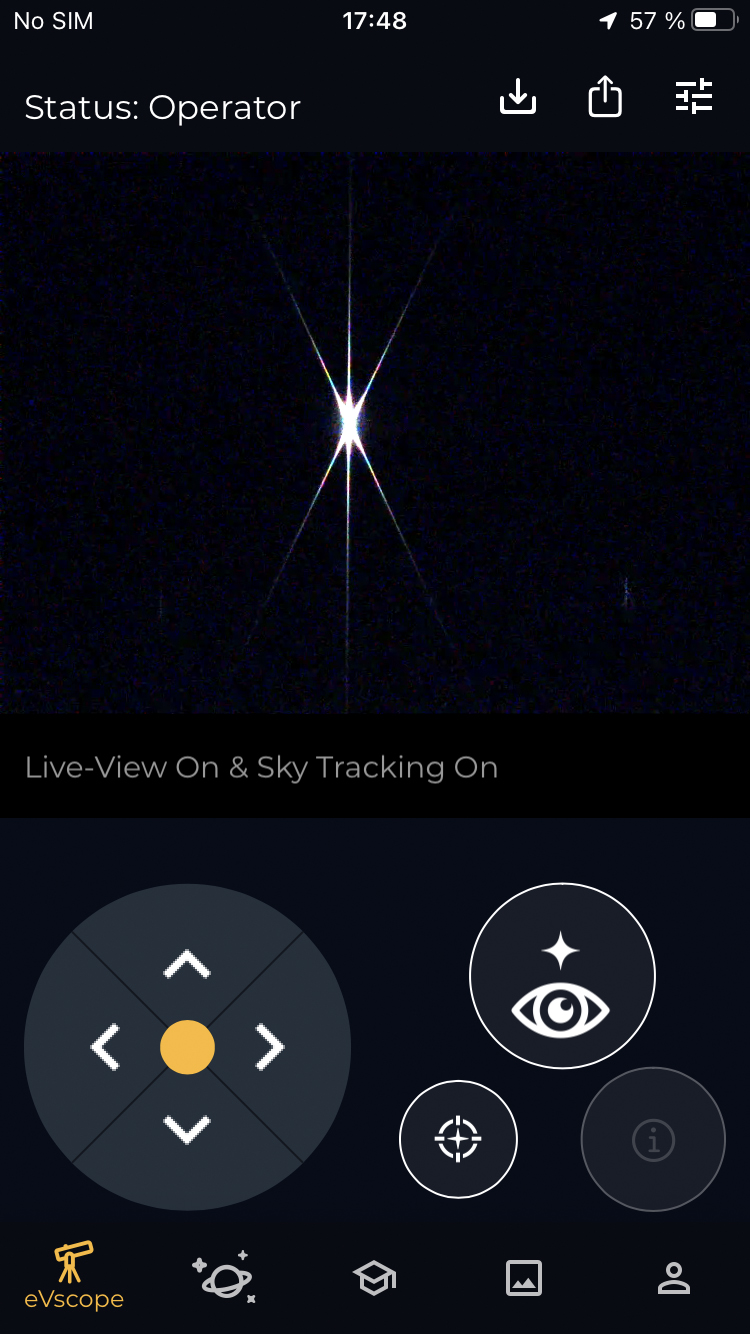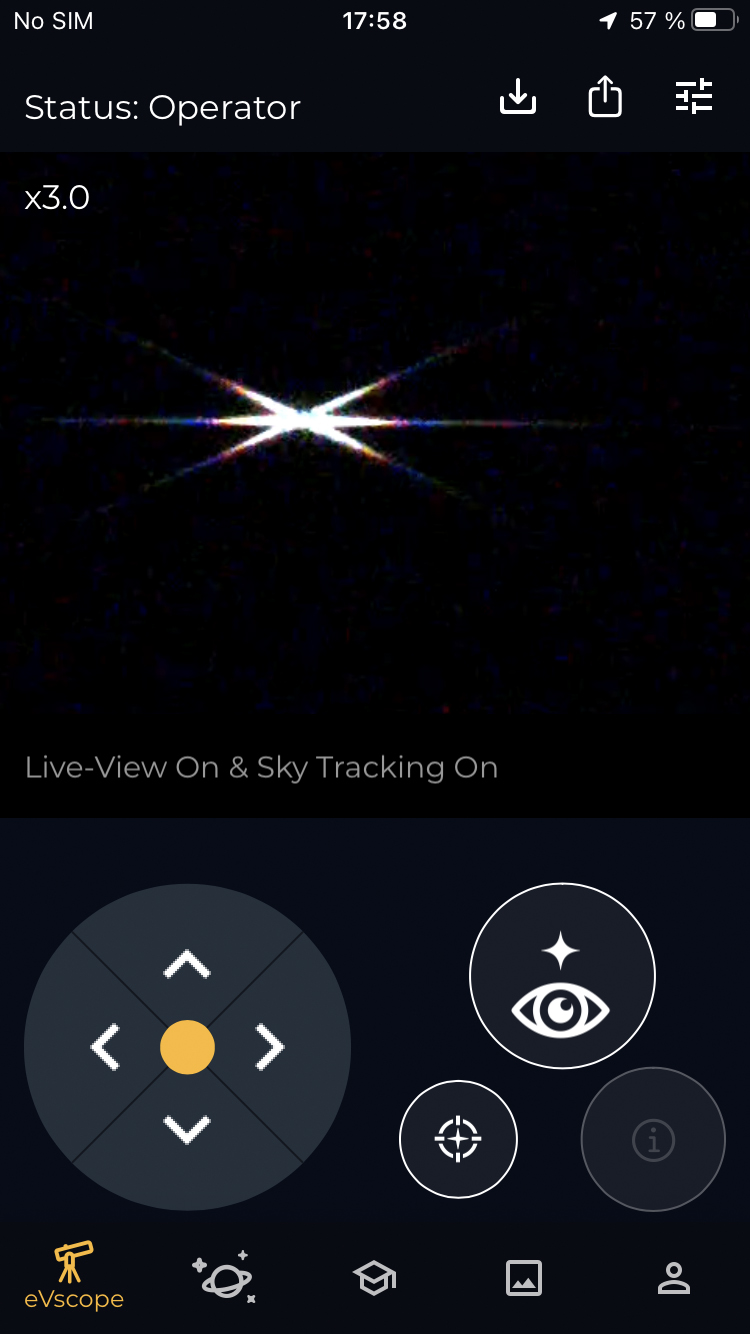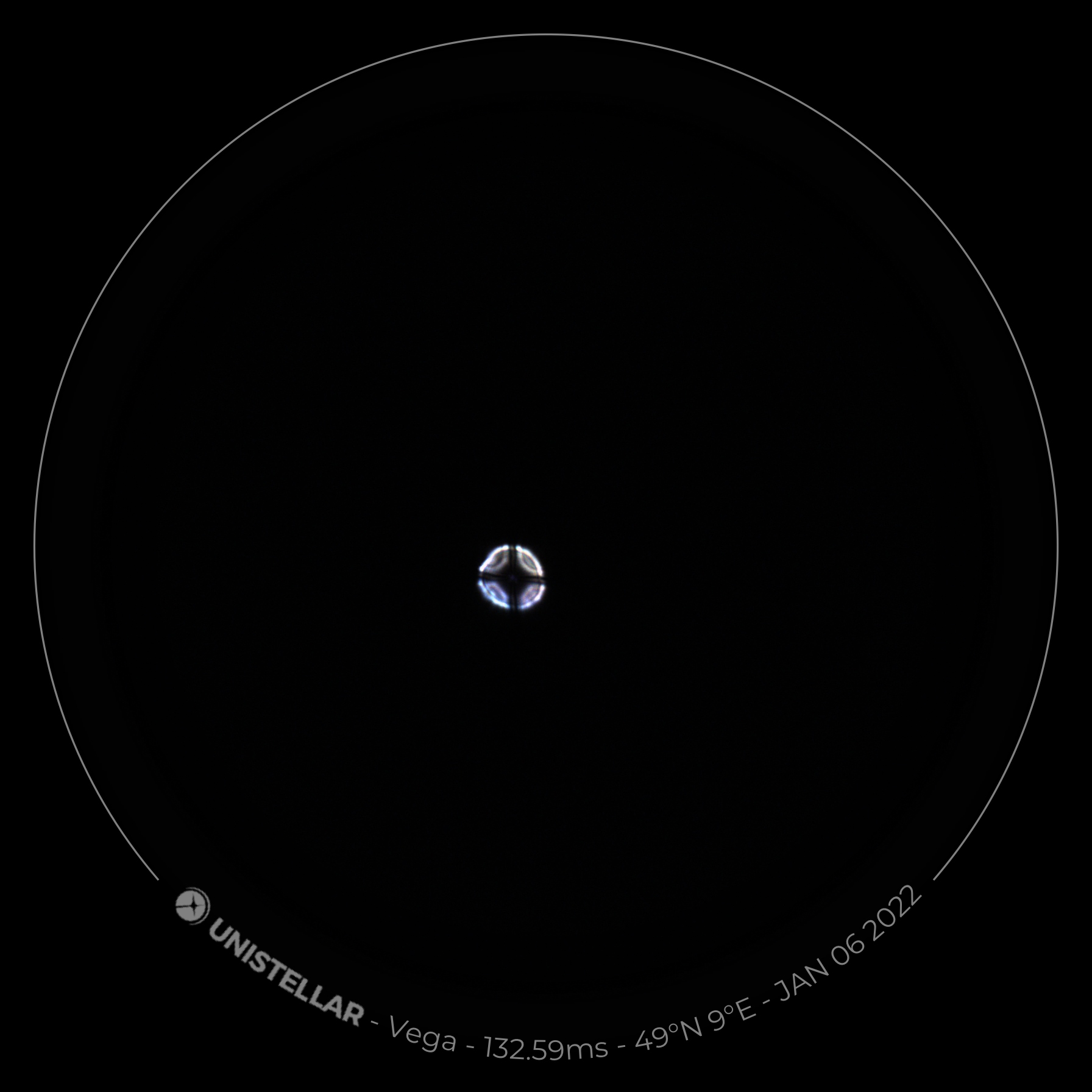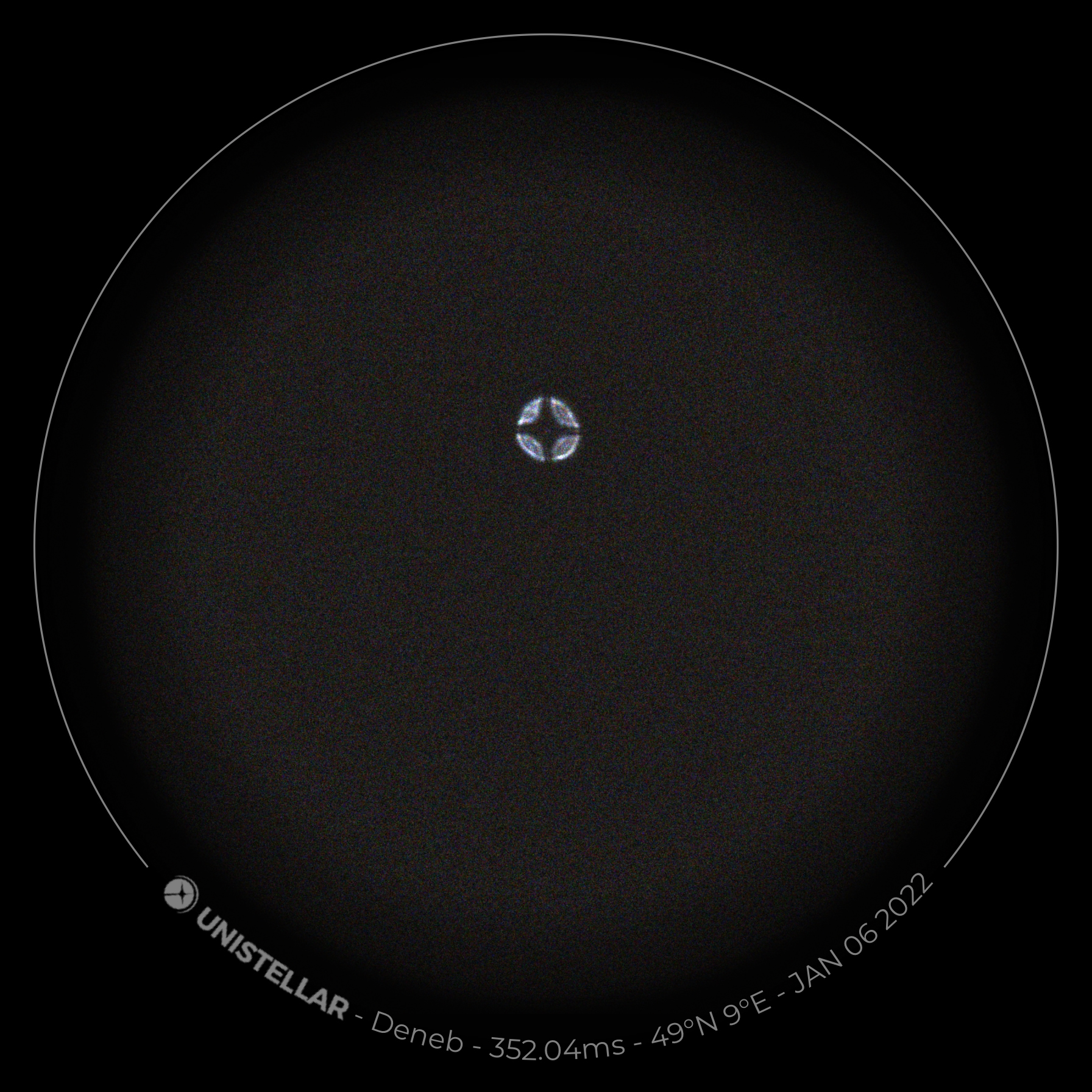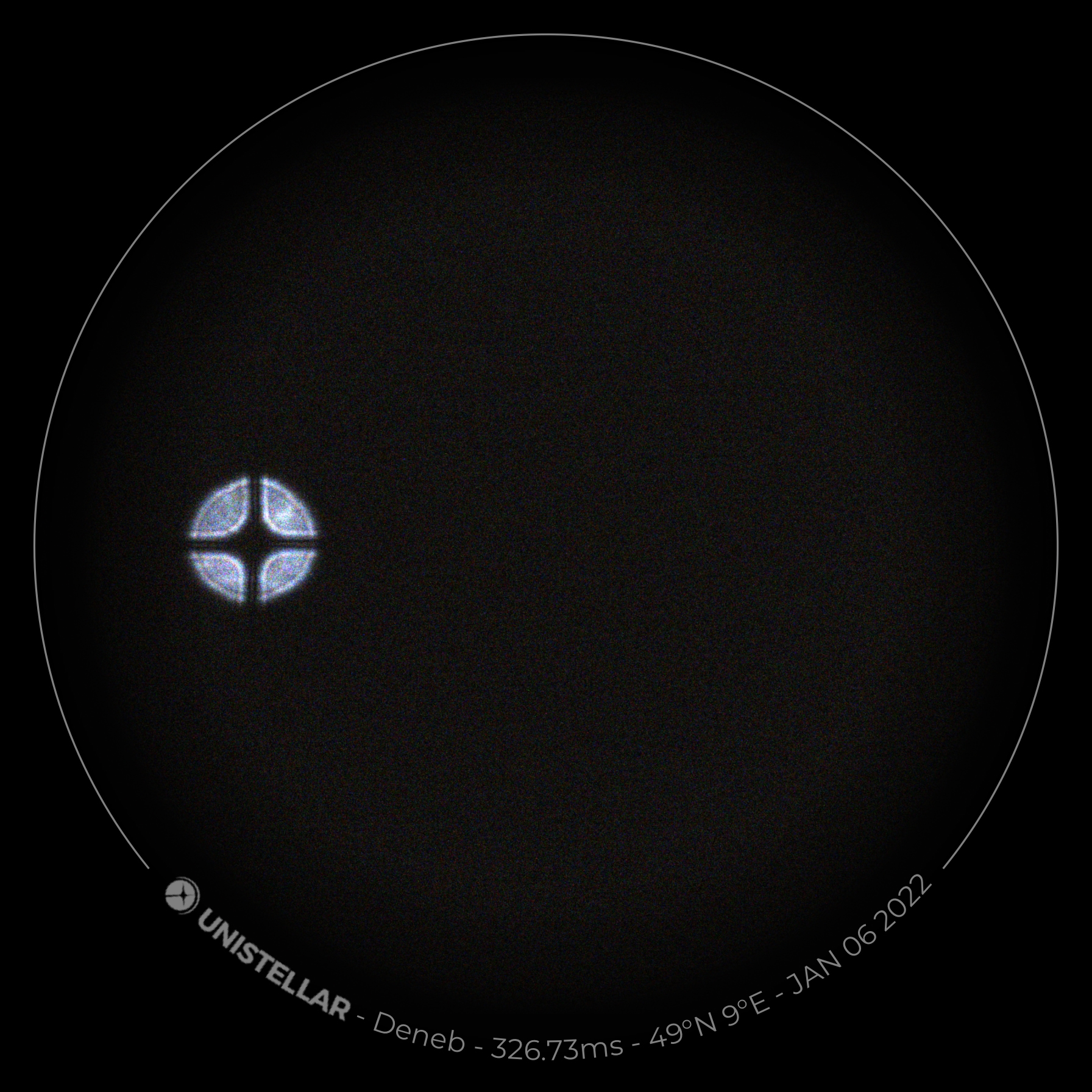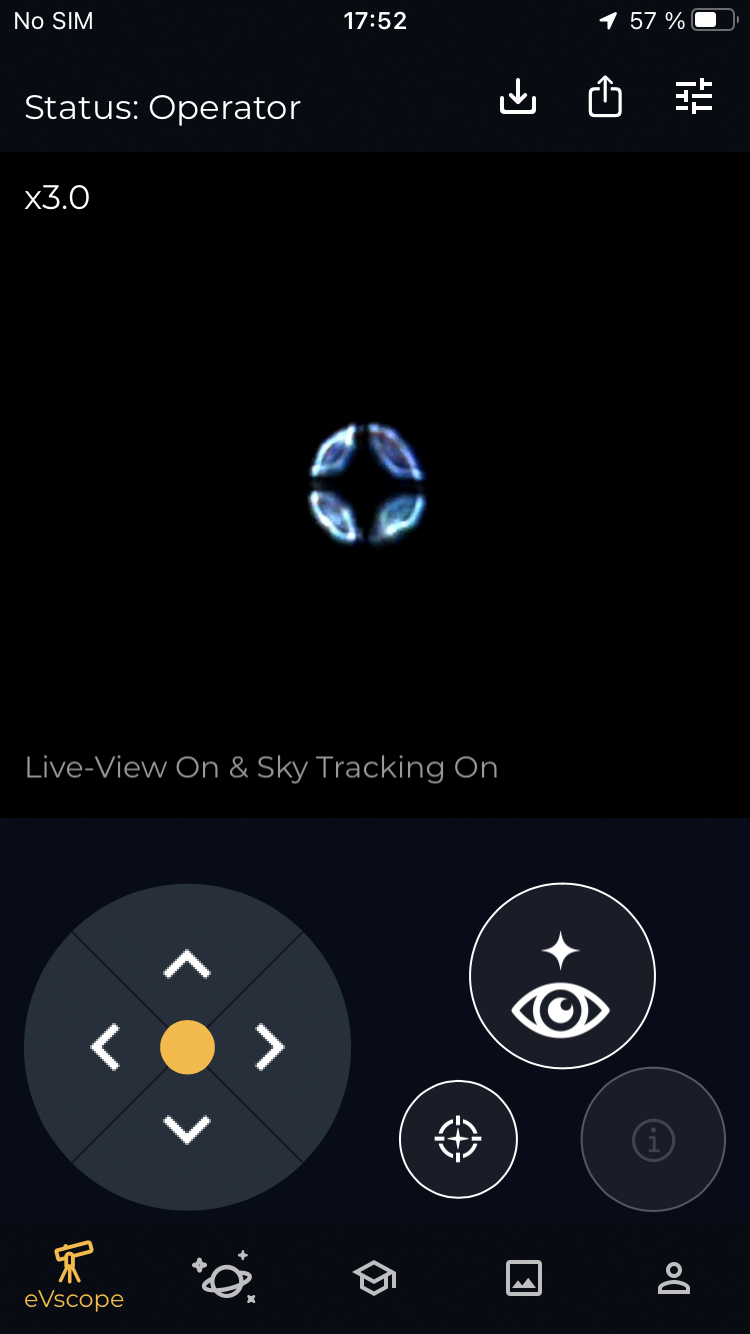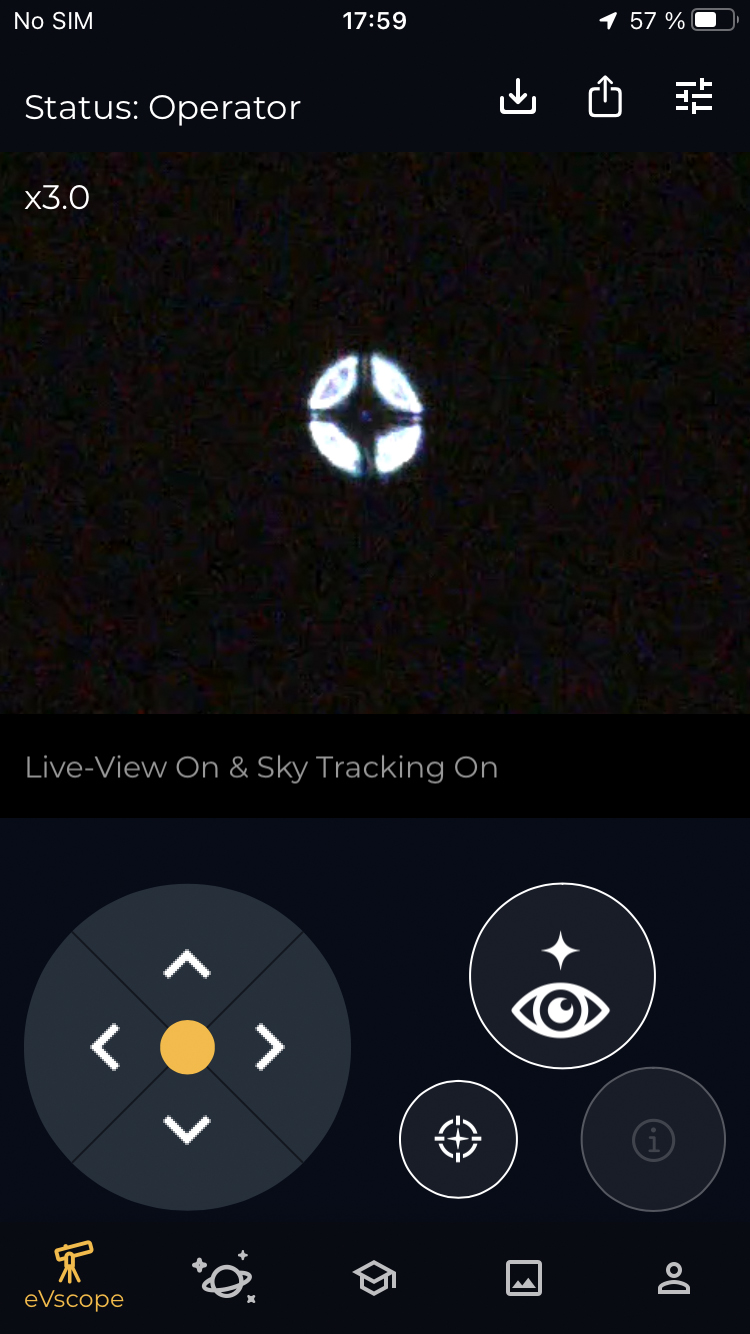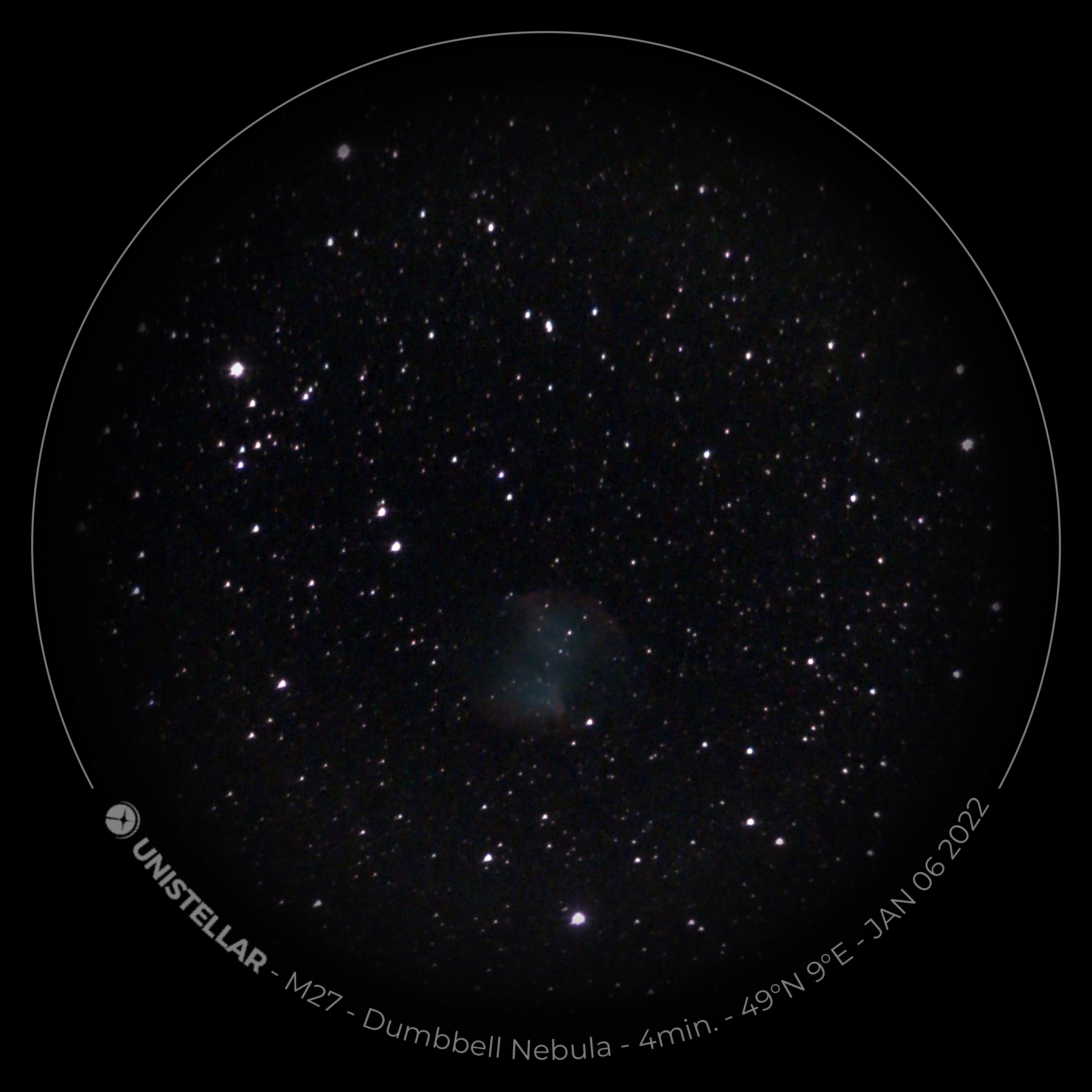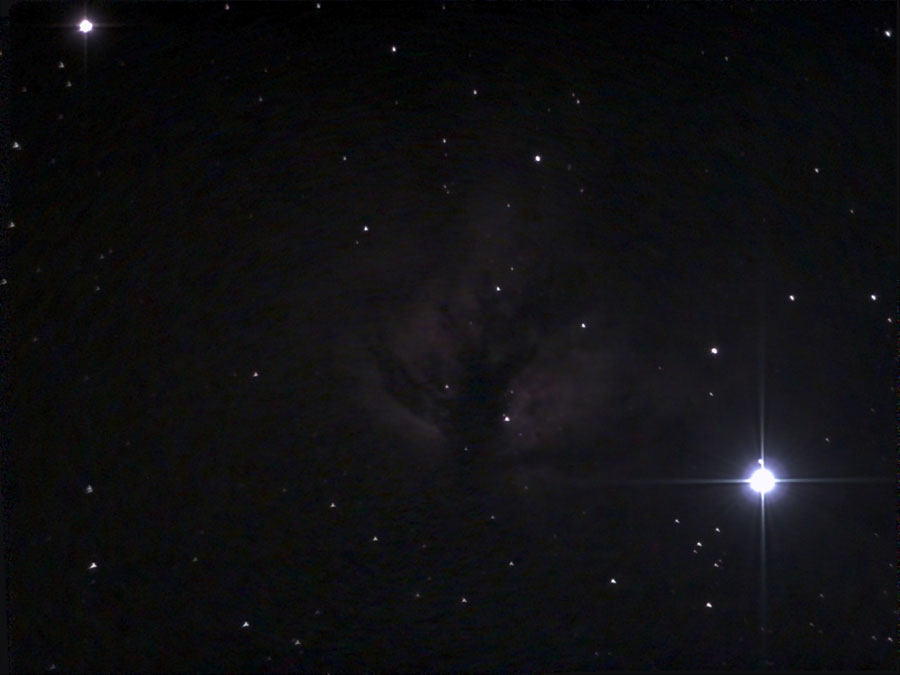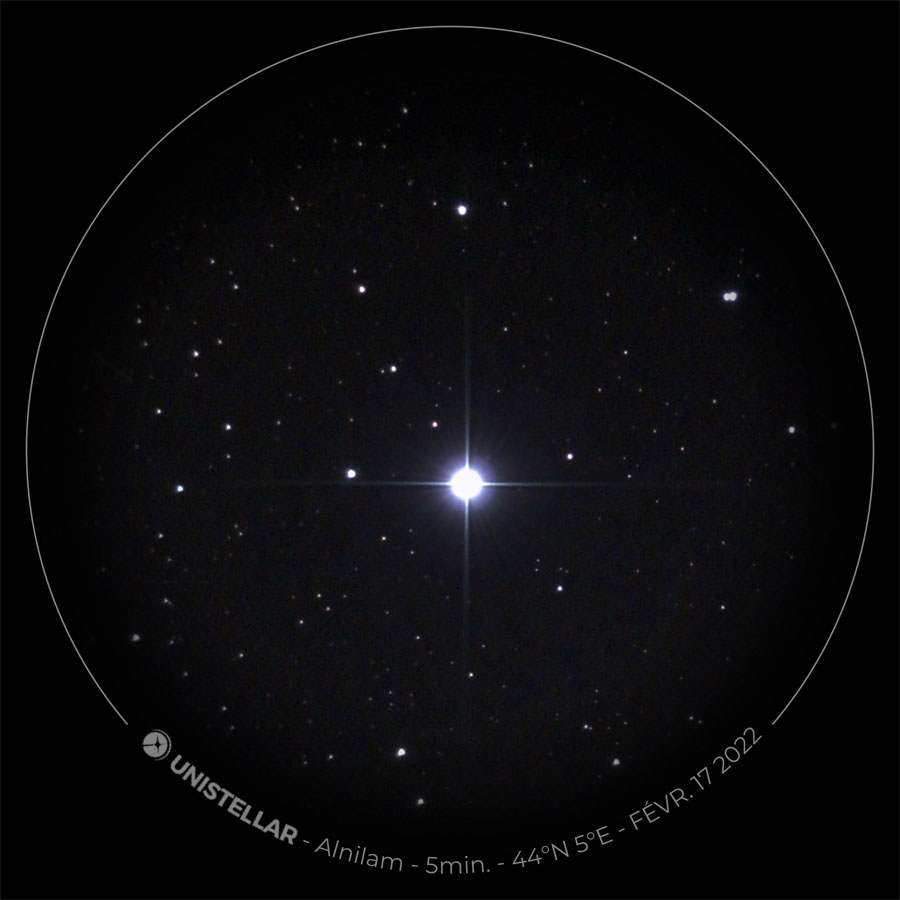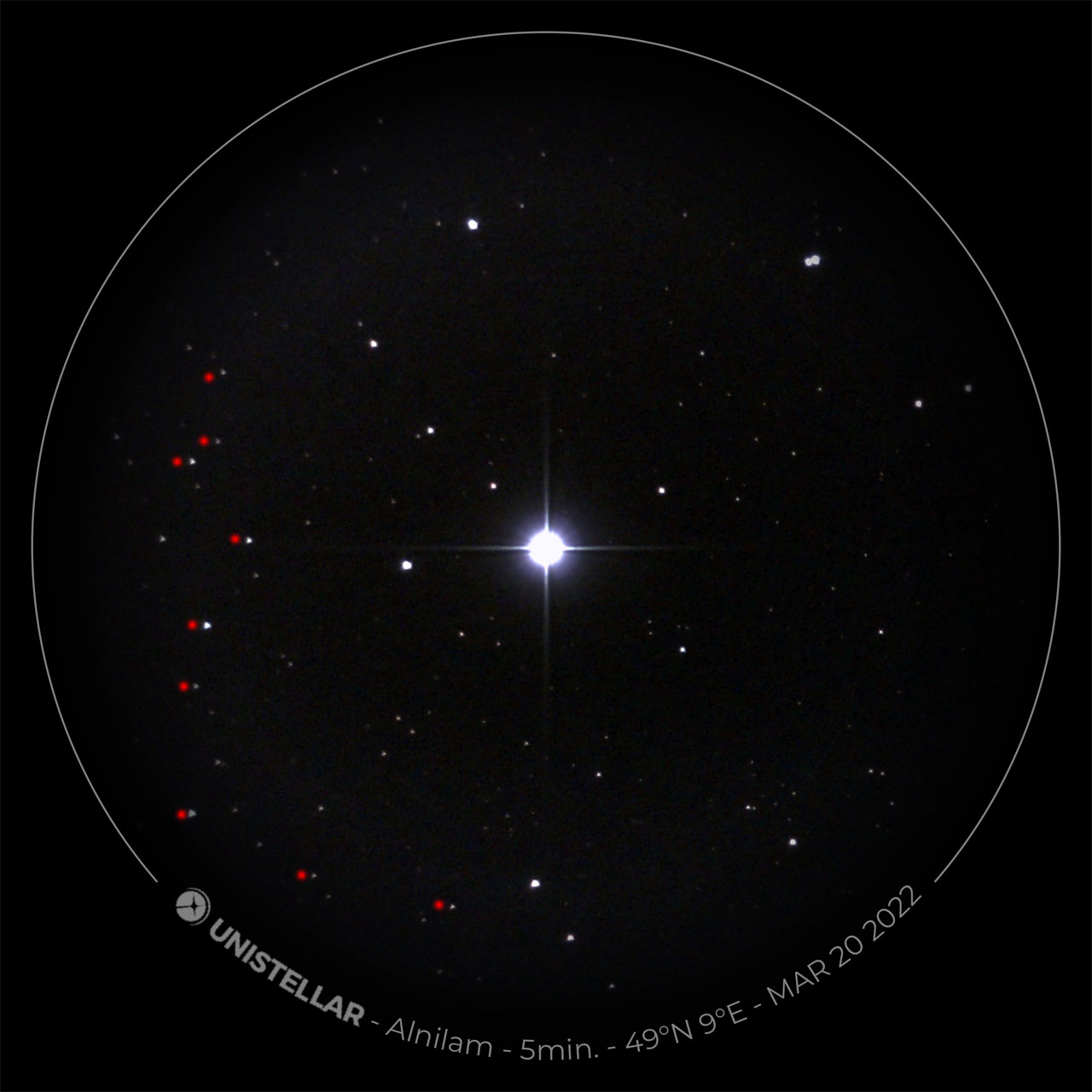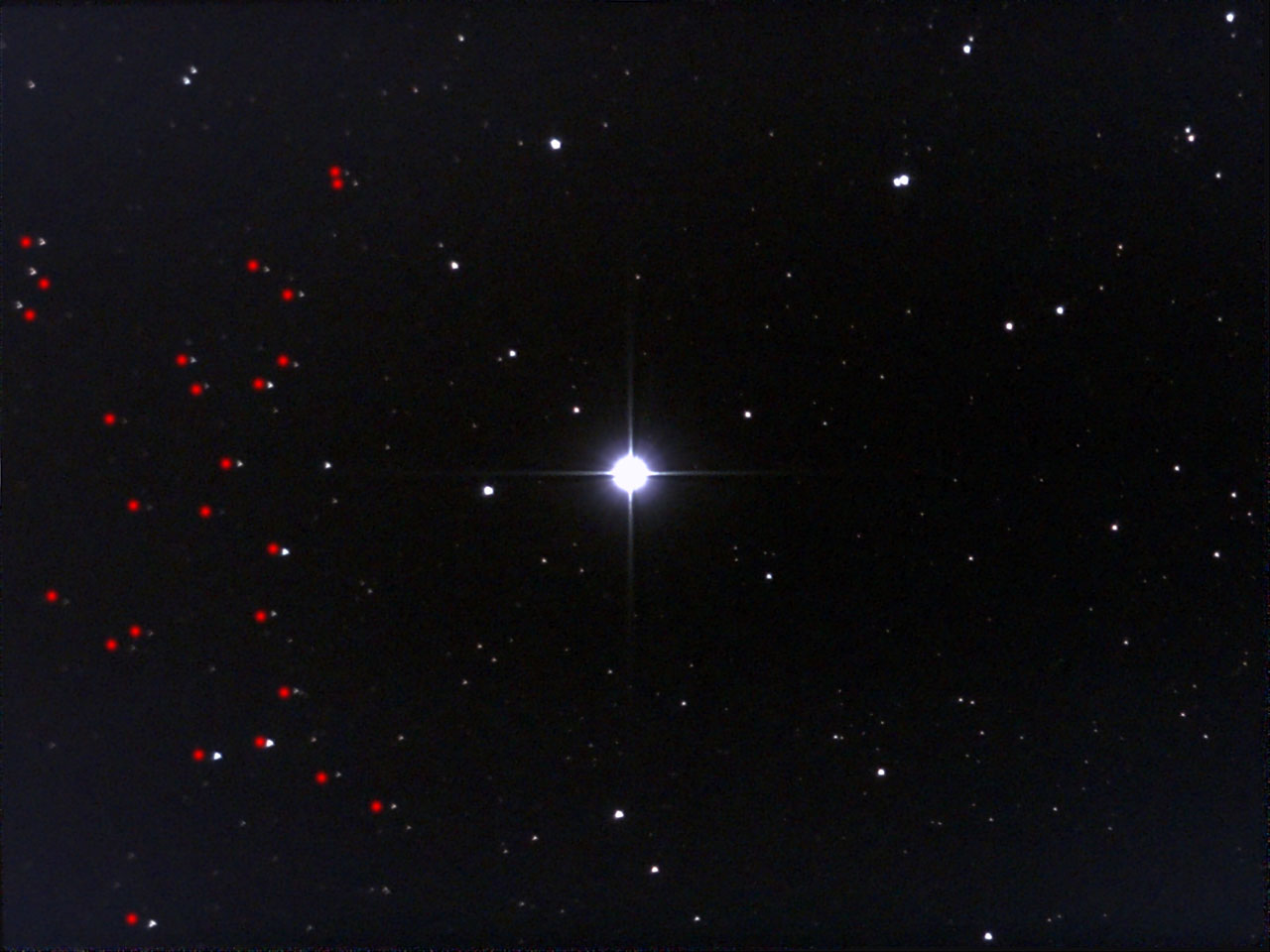Unistellar eVscope 2 - First Experiences (Collimation Test)
Introduction | Bahtinov Mask | Collimation Pattern | Turning the Focusing Wheel | Some Observed DSO | First Conclusions | Links
Archive
On this page, I describe my experiences with a "test procedure" for
the collimation state of
my electronic 4,5" Newton
telescope Unistellar eVscope 2*. Possibly, these are useful for others who want to
acquire the eVscope 2 as well...
*) I ordered the eVscope 2 in October 2021; it arrived at the beginning of December, 2021; repaired by Unistellar; returned to be exchanged with a new one in March 2022 (the second one).
Note: Since I was not satisfied with the results of my new eVscope 2, Unistellar offered to check and possibly repair my eVscope 2. So, I sent it to Unistellar on February 14, 2022 and received information on February 18 that my eVscope 2 had been repaired and will be returned to me. When asked, I was told that there was a problem with the primary mirror, which was slightly under tension and therefore produced blurry images. As proof of the repair, I received a photo of Alnilam. It looks much better than my similar photo of Alnitak (near the Flame Nebula), but at closer look still exhibits triangular stars). The story still continues! Meanwhile, I was able to test my repaired eVscope 2 and report on my results on pages First Experiences (After Repair - Part 1) and First Experiences (After Repair - Part 2). According to this, the repair resulted in an improvement, but did not completely eliminate the mirror tension. Unistellar therefore offered me to return my eVscope 2 (end of March 2022) and exchange it for a new one. This arrived on April 8, 2022. So I close the pages for my first eVscope 2 sample! So please note that my eVscope 2 photos on this page do not reflect the true performance of the eVscope 2! |
Note: See page Overview of the Unistellar Pages for just that!
Introduction
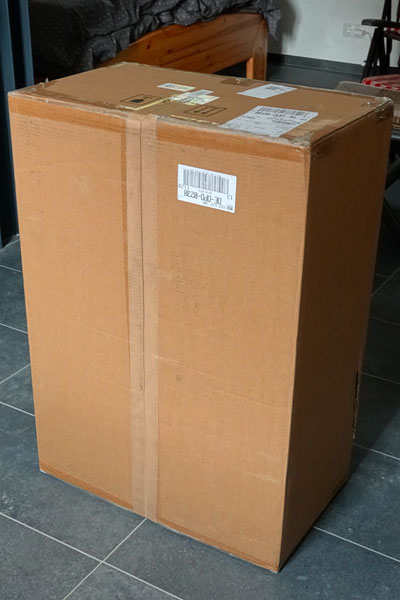 |
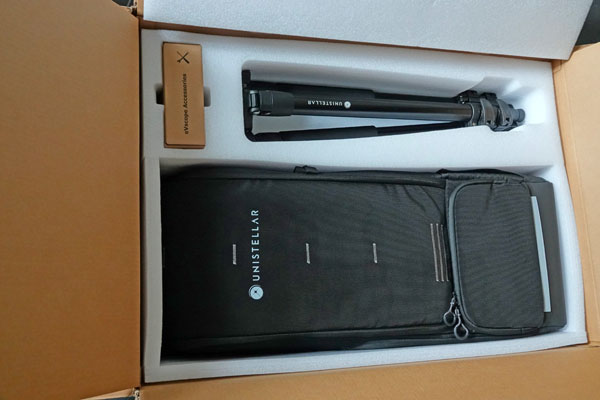 |
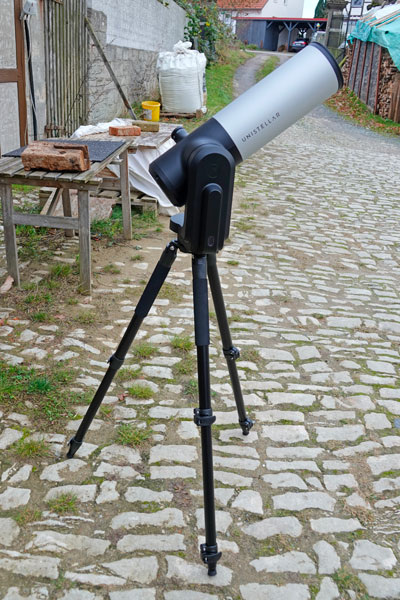 |
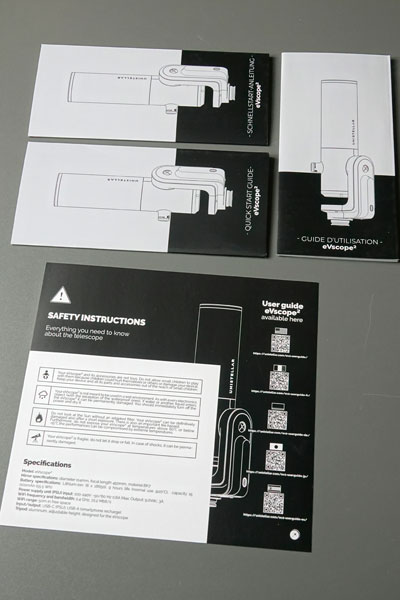 |
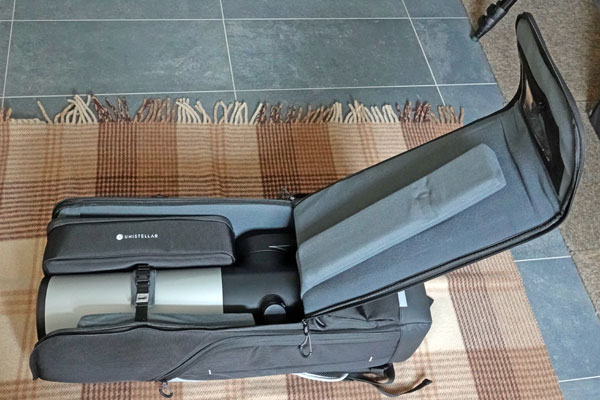 |
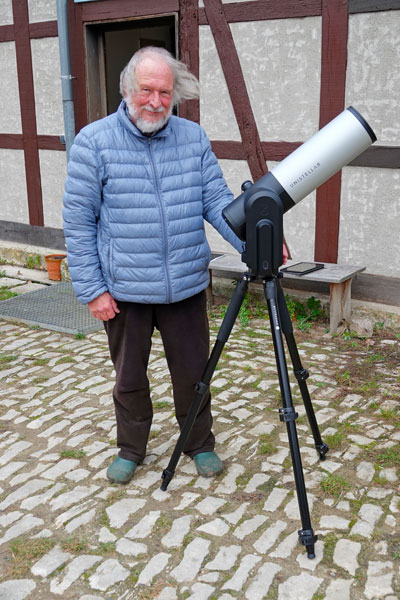 |
Photos: My eVscope 2 (December 3, 2021)
After I had sent a few first photos taken with my new Unistellar eVscope 2 to Anna at Unistellar and showed some disappointment with respect to the achieved results (see page First Photos), Anna promised to forward my e-mail to the technical department at Unistellar. Soon after, the support of Unistellar contacted me and asked for some test photos showing (1) the collimation pattern (the cross that the spider creates when the telescope is misfocused) and (2) the pattern that the Bahtinov mask creates, when a star is focused. Furthermore, the support asked me to take a movie, while I was turning the focus wheel from one end to the other. Since I did not know how to create a movie of this, we agreed that I send photos that I took during the movements of the focus wheel. Since the night sky was overcast for many days, I was not able to tackle these tasks until January 6, 2022; I describe them in the following.
At the end of this page, I add some photos that I took with the eVscope 2 after the tests were done (and before the clouds came...). Note that I used the "old" collimation from my previous observation for all this, because I was not sure how I might improve the collimation state (the cross seemed more or less "correct" to me...).
Bahtinov Mask
One of my tasks was to take and send a photo of a focused star with the Bahtinov mask on. First, I tried Vega, because it is one of the brightest stars, but is was soon covered by clouds. So, I moved to the less bright star Deneb, instead.
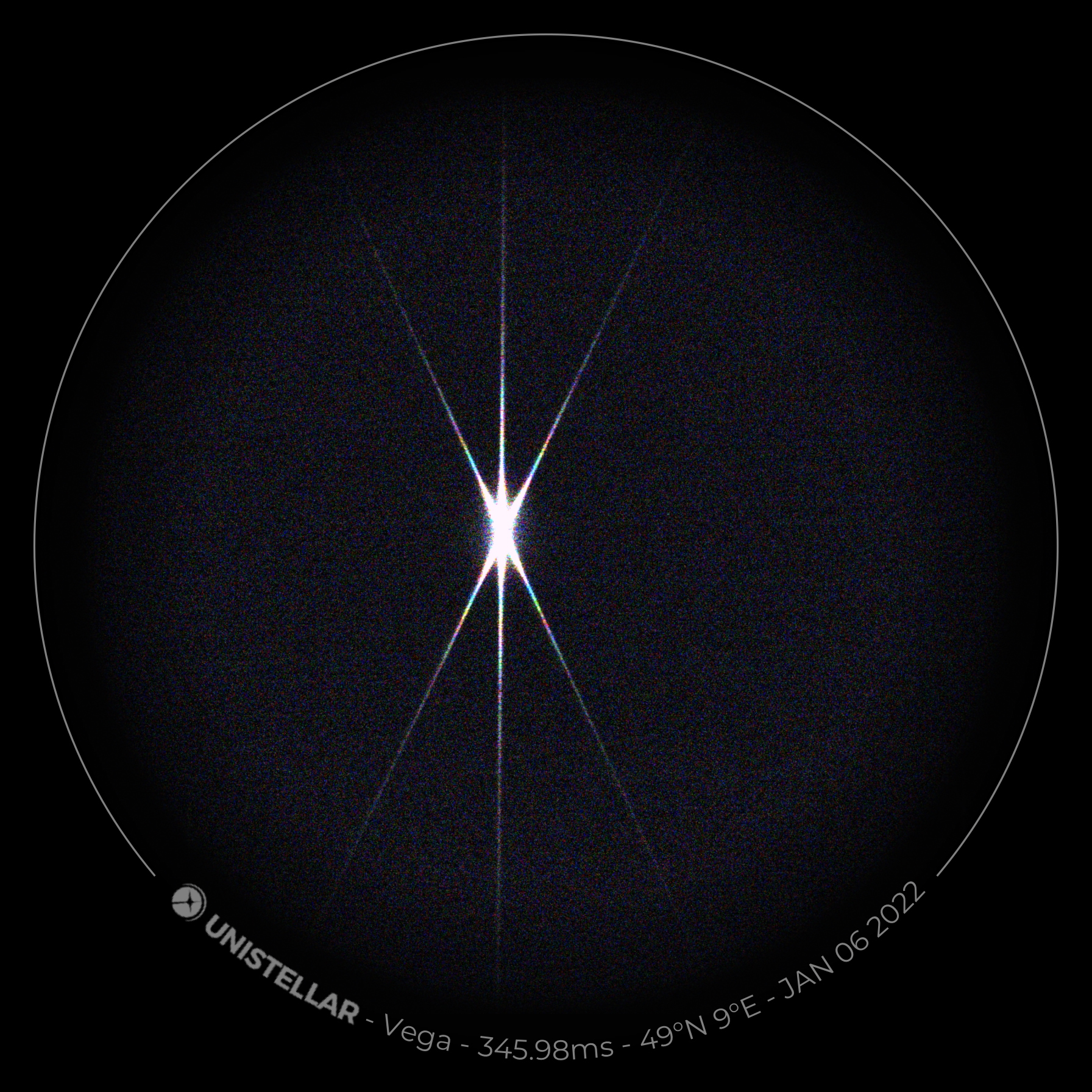 |
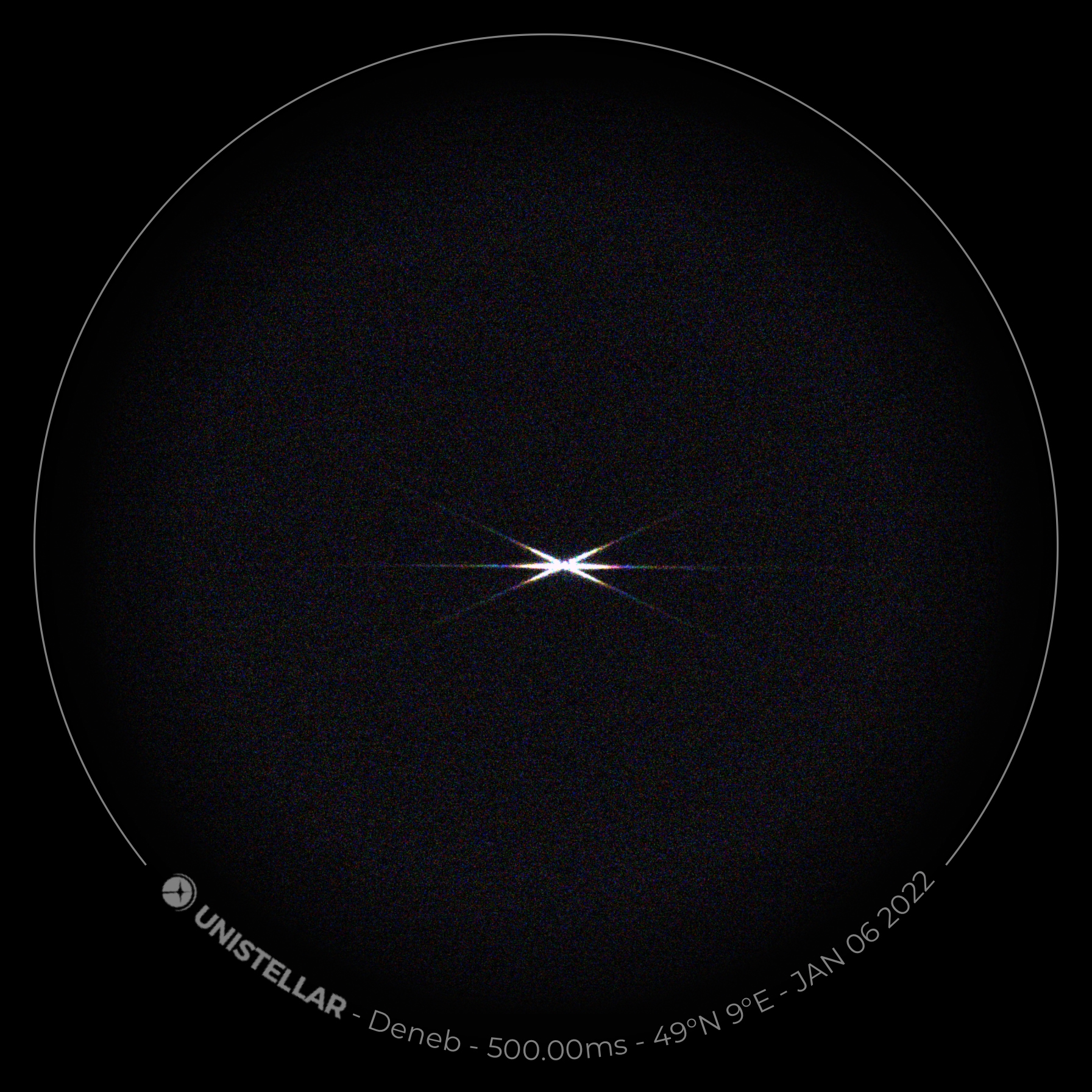 |
|
Bahtinov pattern for Vega (not quite optimal) |
Bahtinov pattern for Deneb |
|
Screenshots of the Bahtinov pattern for Vega |
Screenshot of the Bahtinov pattern for Deneb |
Collimation Pattern
A second task was to take a photo of a collimation pattern (the spider cross) and send it to the support of Unistellar. Here are my attempts at Vega and Deneb:
Turning the Focusing Wheel
The support of Unistellar furthermore asked me to take a movie while turning the focusing wheel from one end to the other. I suggested taking photos during the process, and we support agreed on this. In the following, there are three sequences of images (screenshots) that I took while moving the focus wheel in small steps.
General Matters...
The focus wheel rotates nearly 360° and stops at -90° if you call the top position 0°. From the top position or 0°, it moves smoothly 90° to the left (counter-clockwise). From the top position, which is not the "best" focus position, it moves about 270° to the right (clockwise). The position of the "best" focus is at about 20° to 30° to the right, and from then on, moving the focusing wheel clockwise (and back) goes "stiff" as if there were some internal resistance.
From Left to Right End
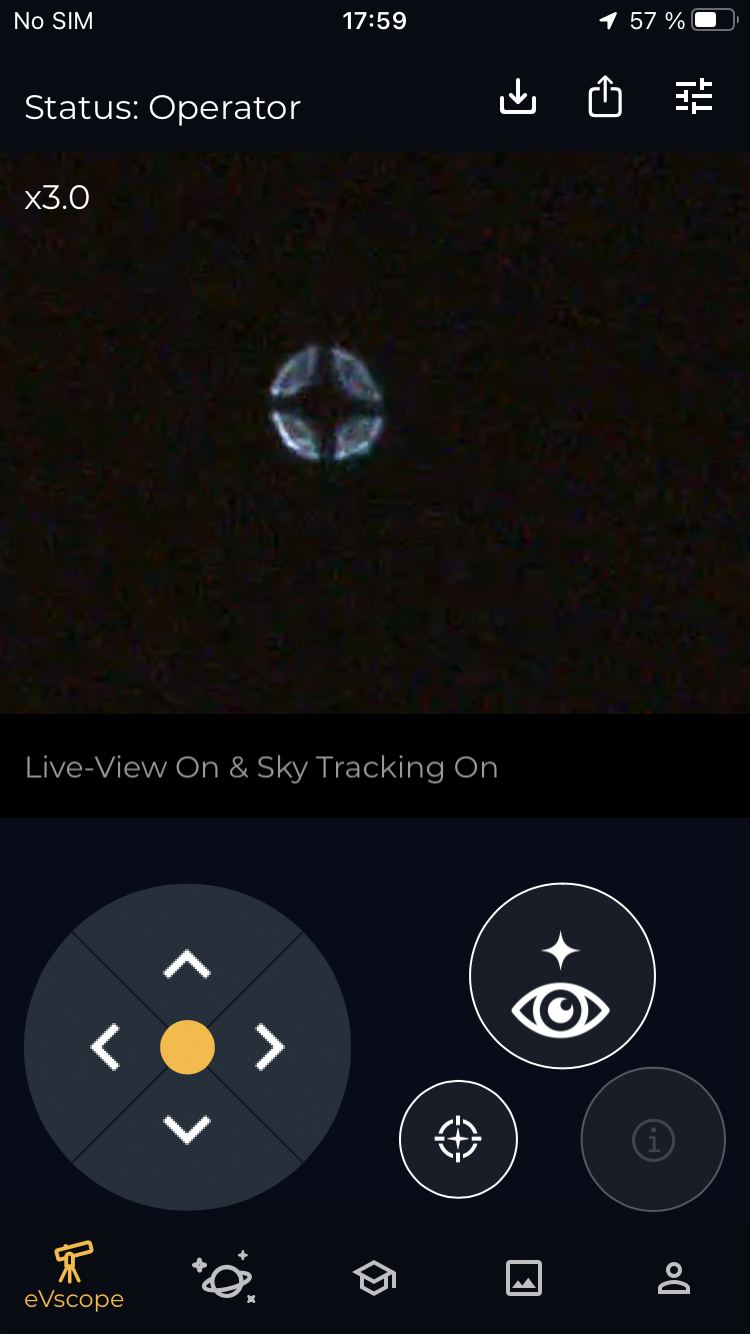 |
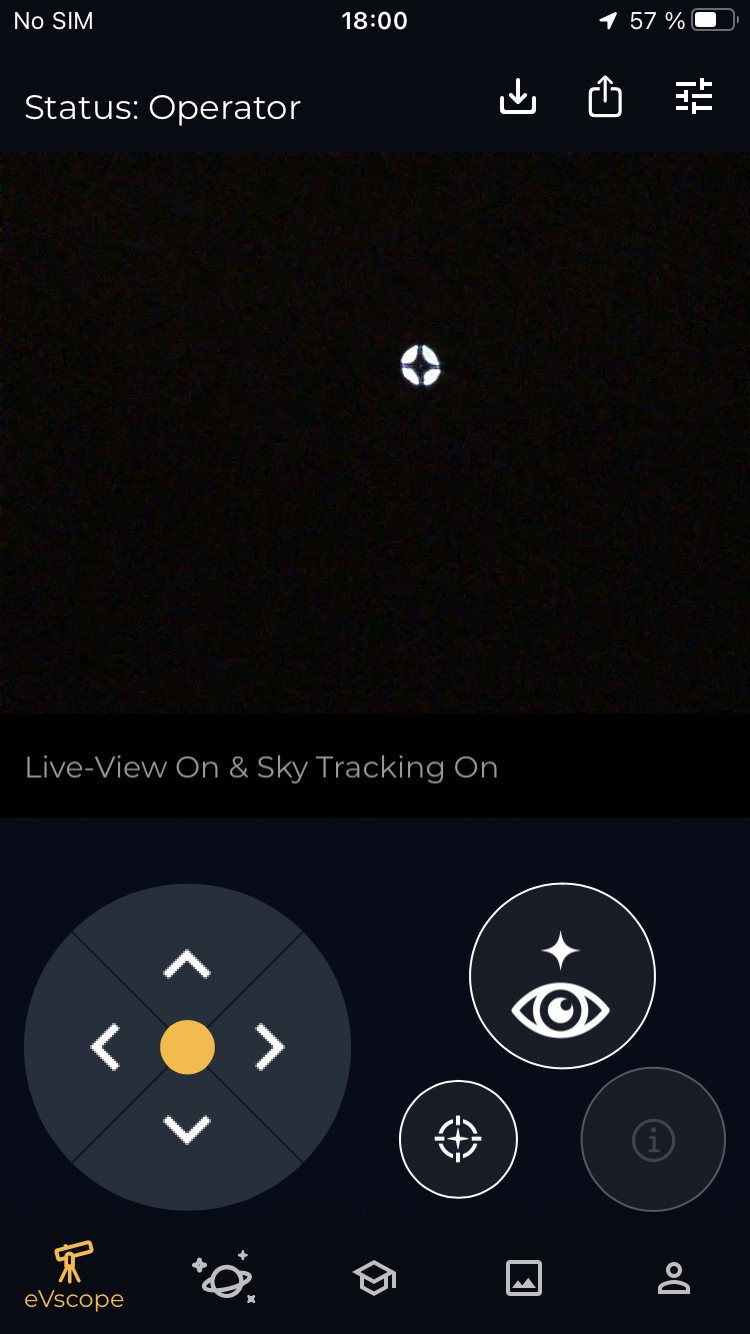 |
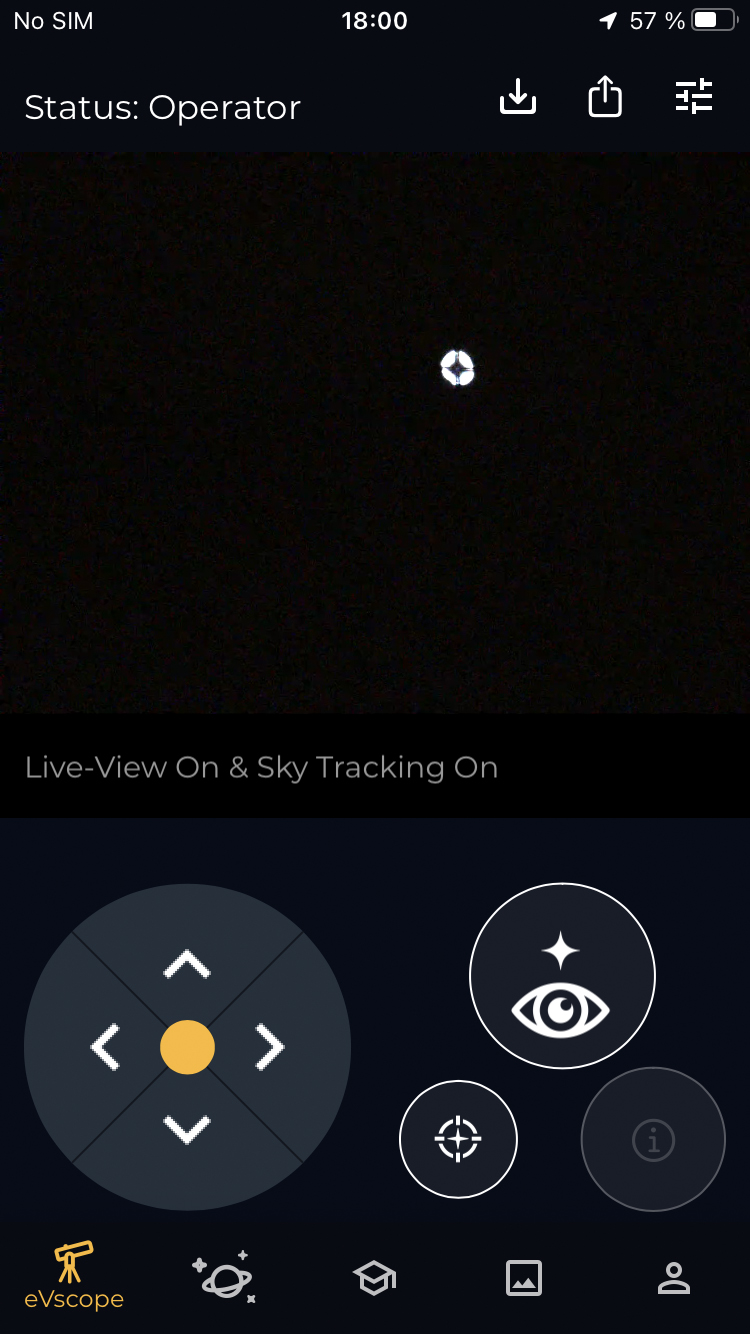 |
 |
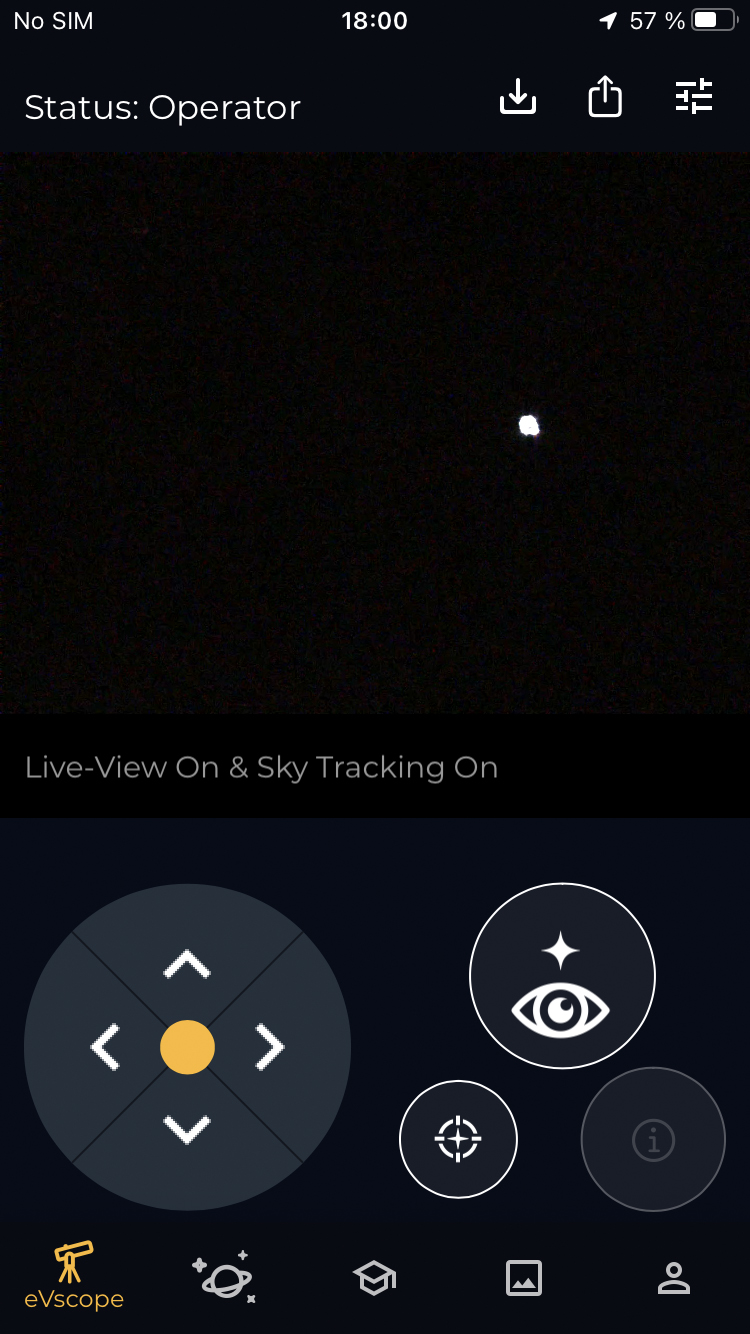 |
 |
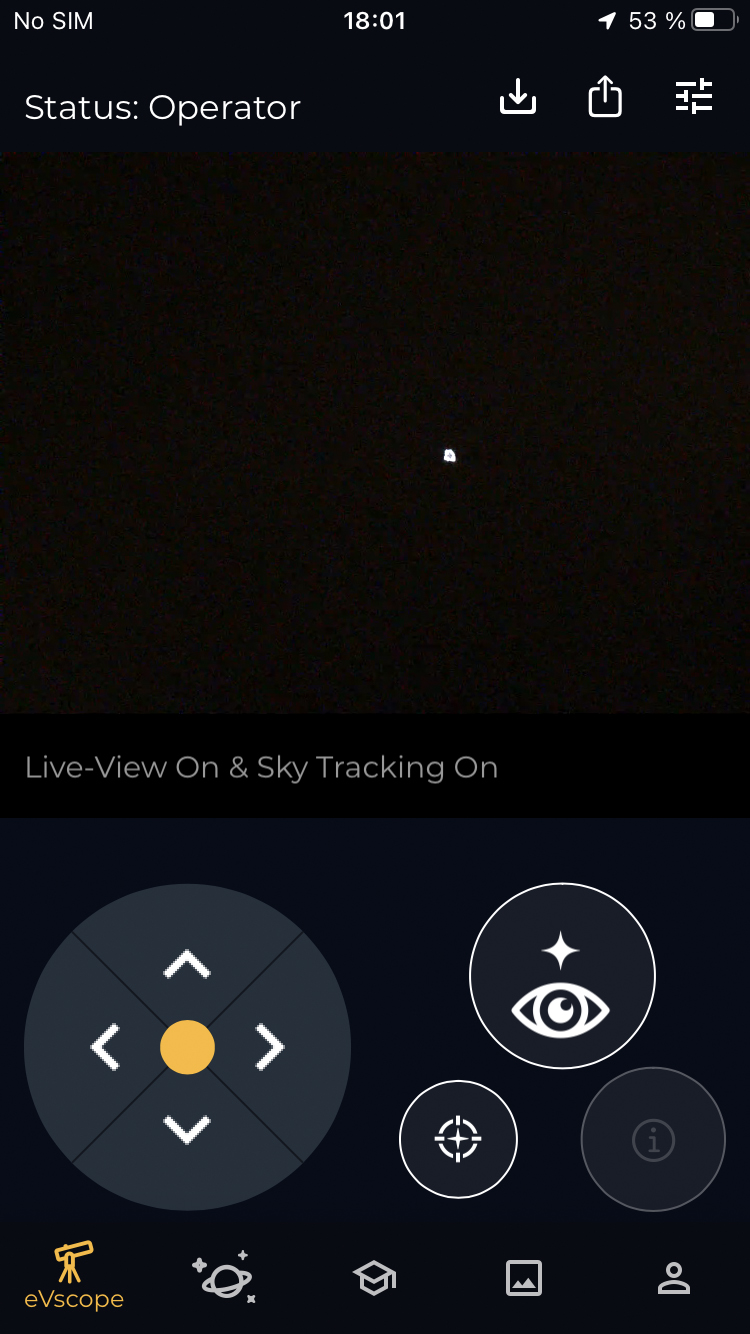 |
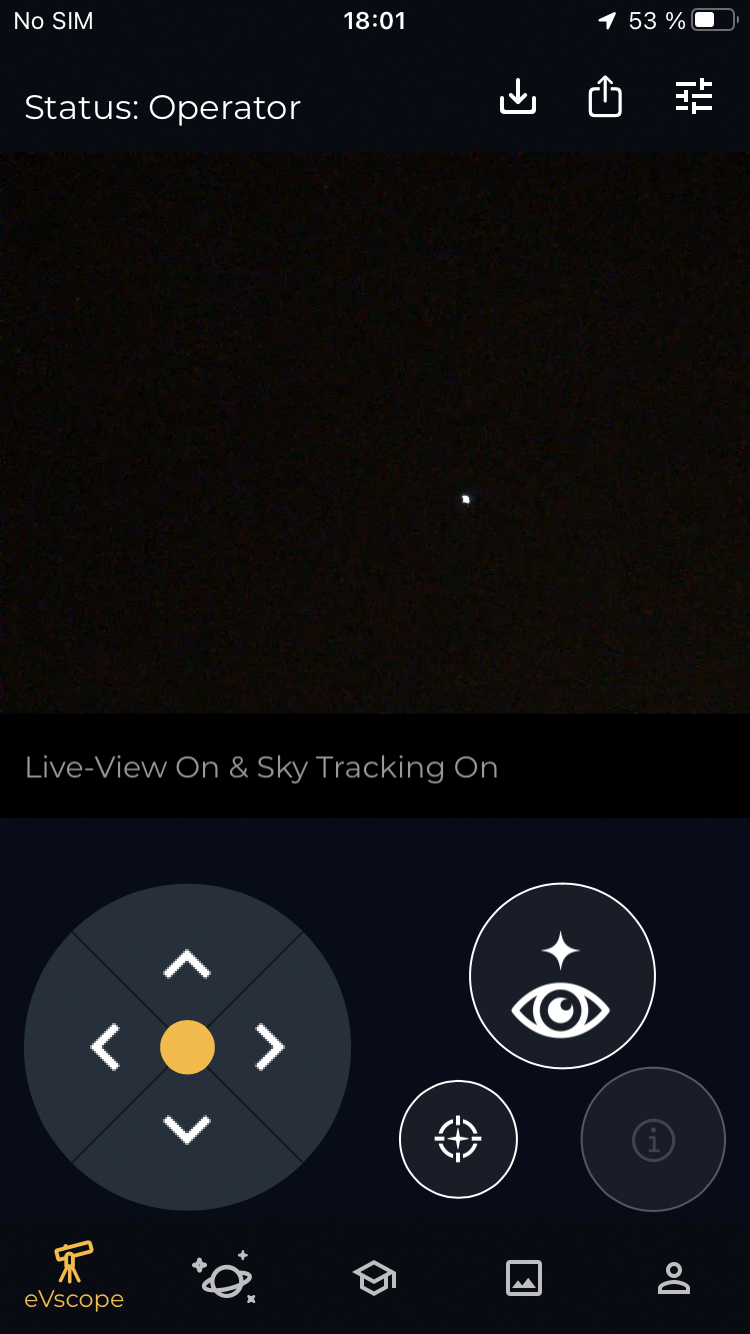 |
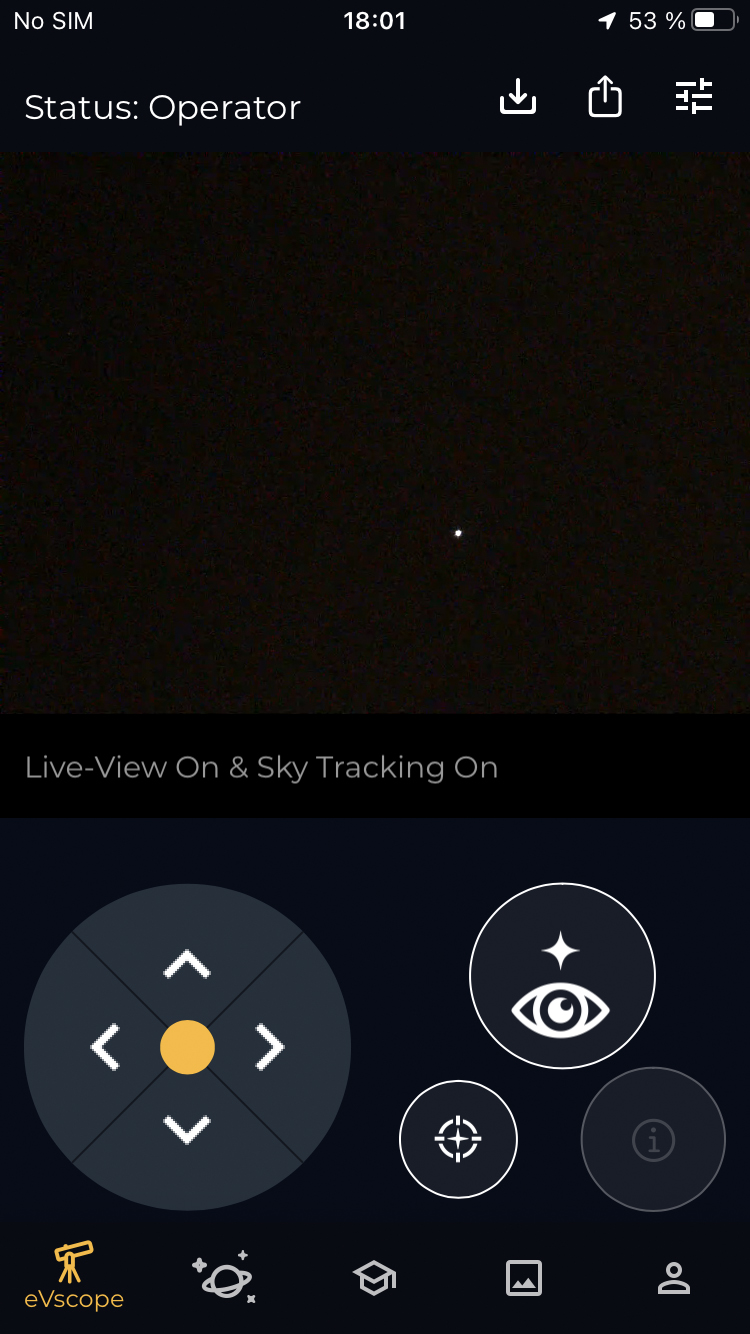 |
 |
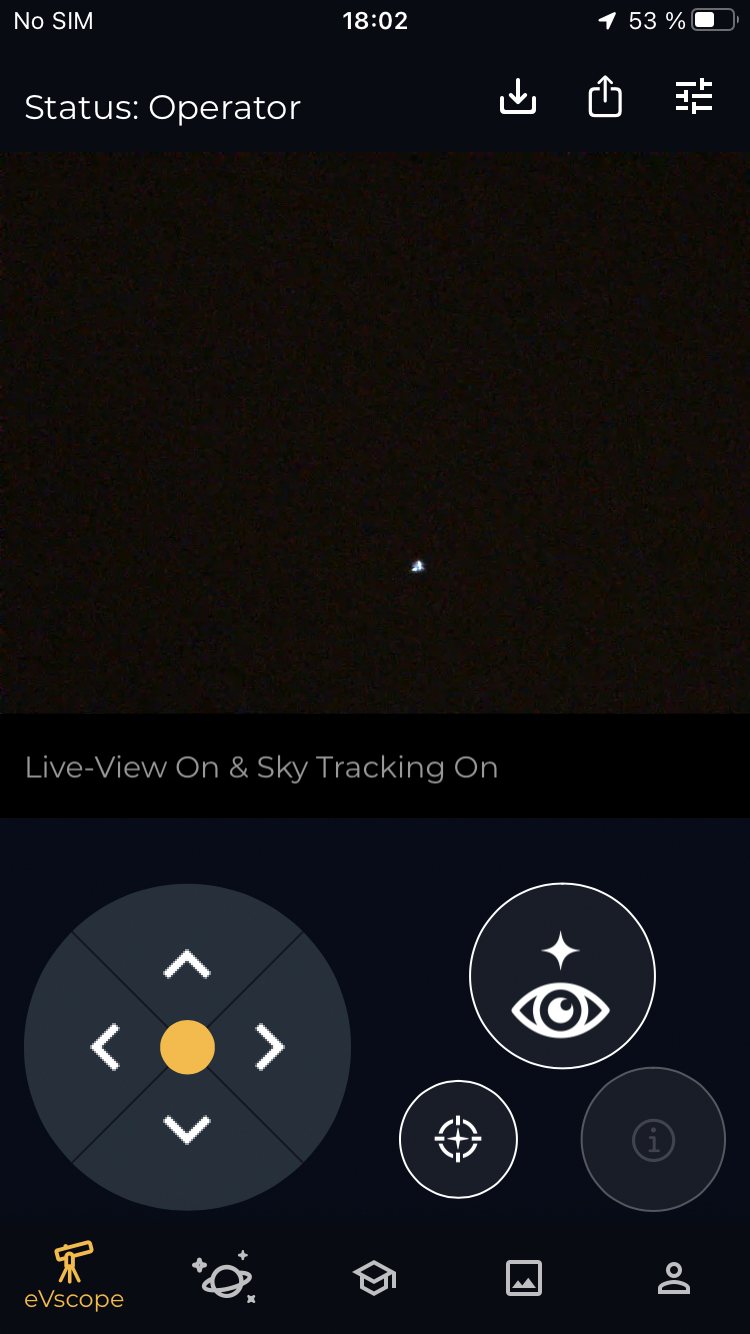 |
 |
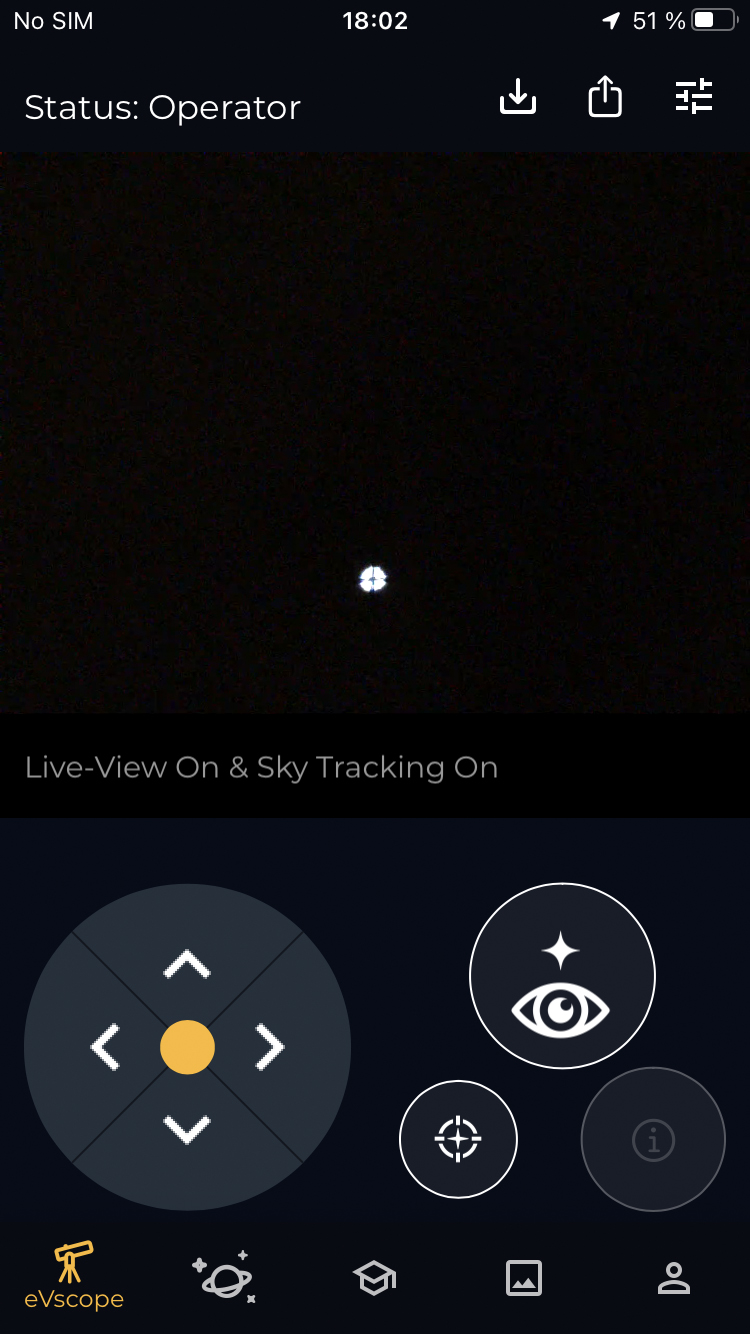 |
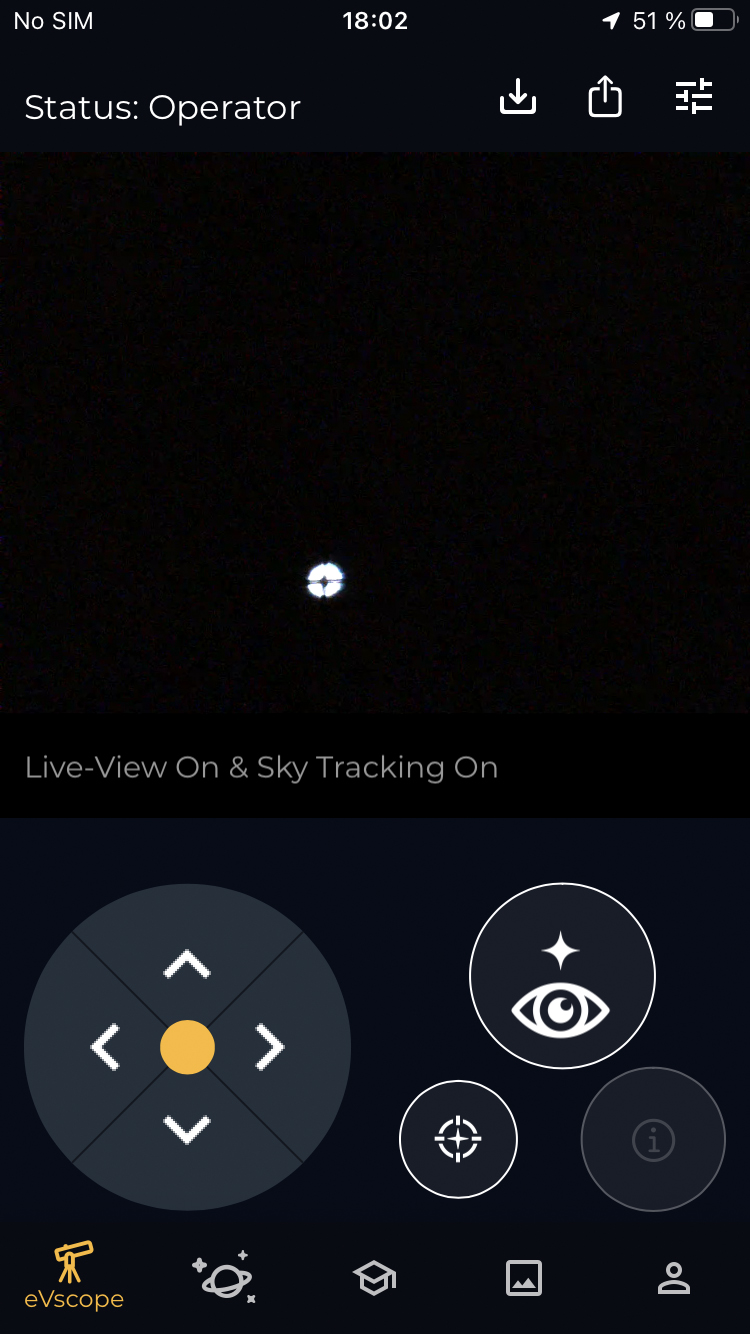 |
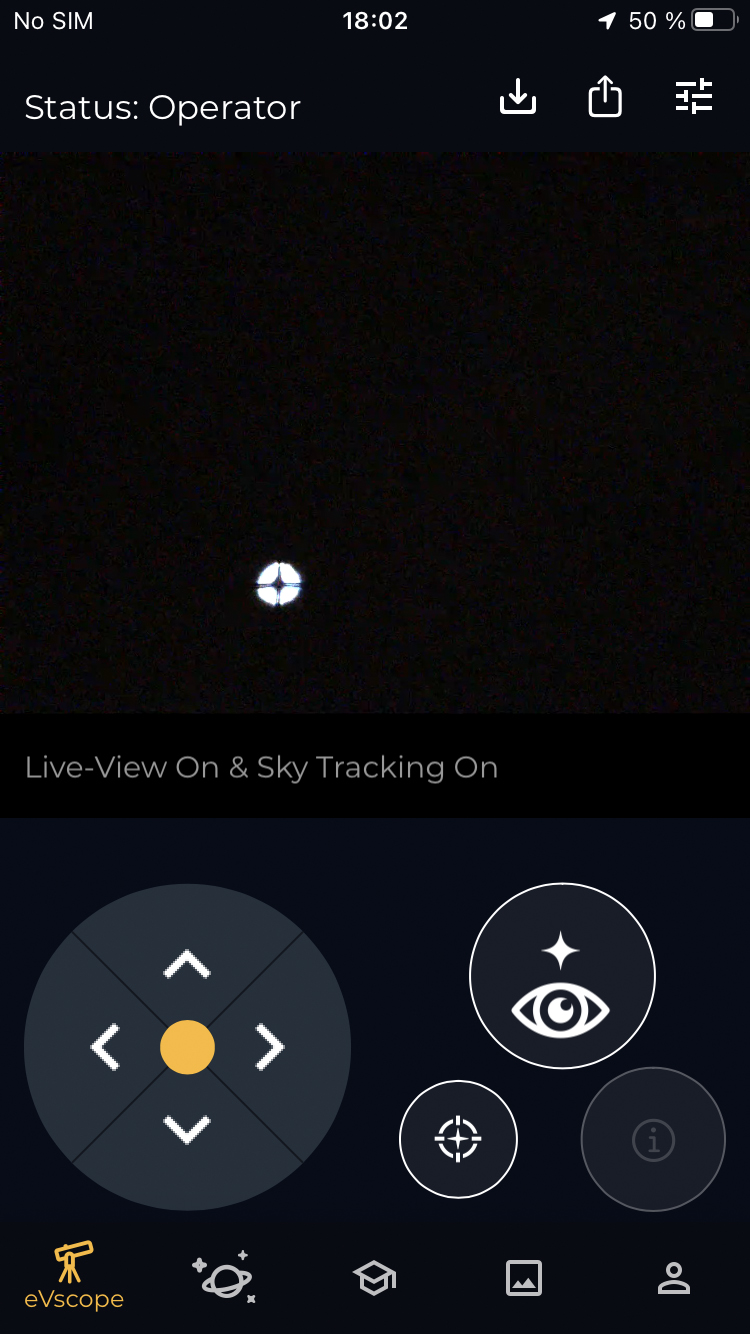 |
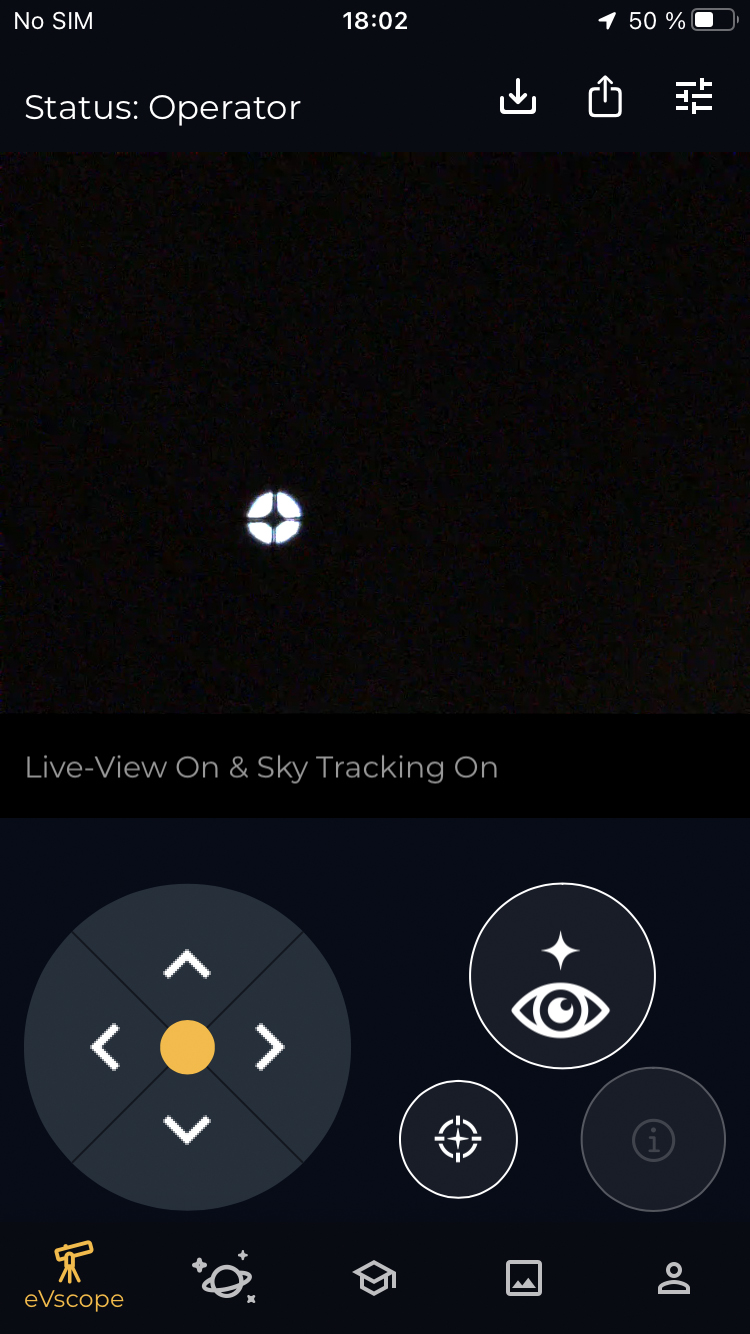 |
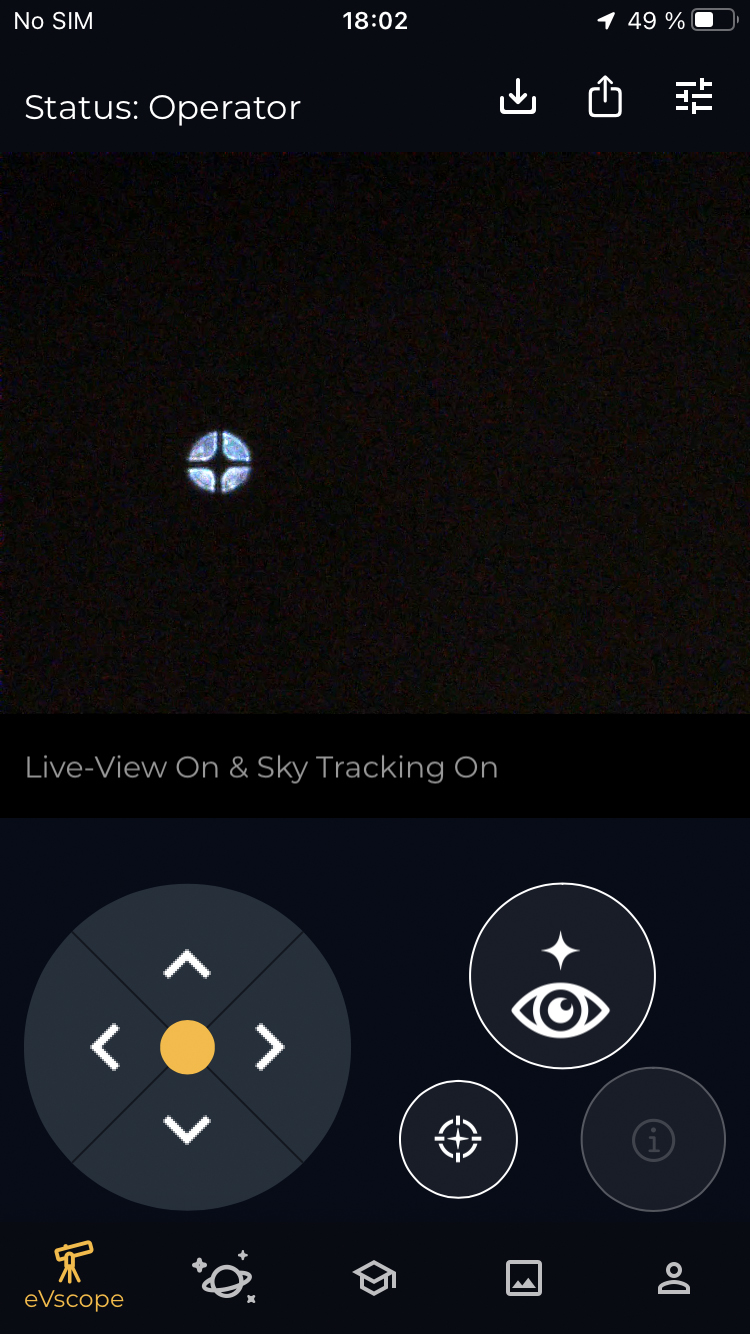 |
 |
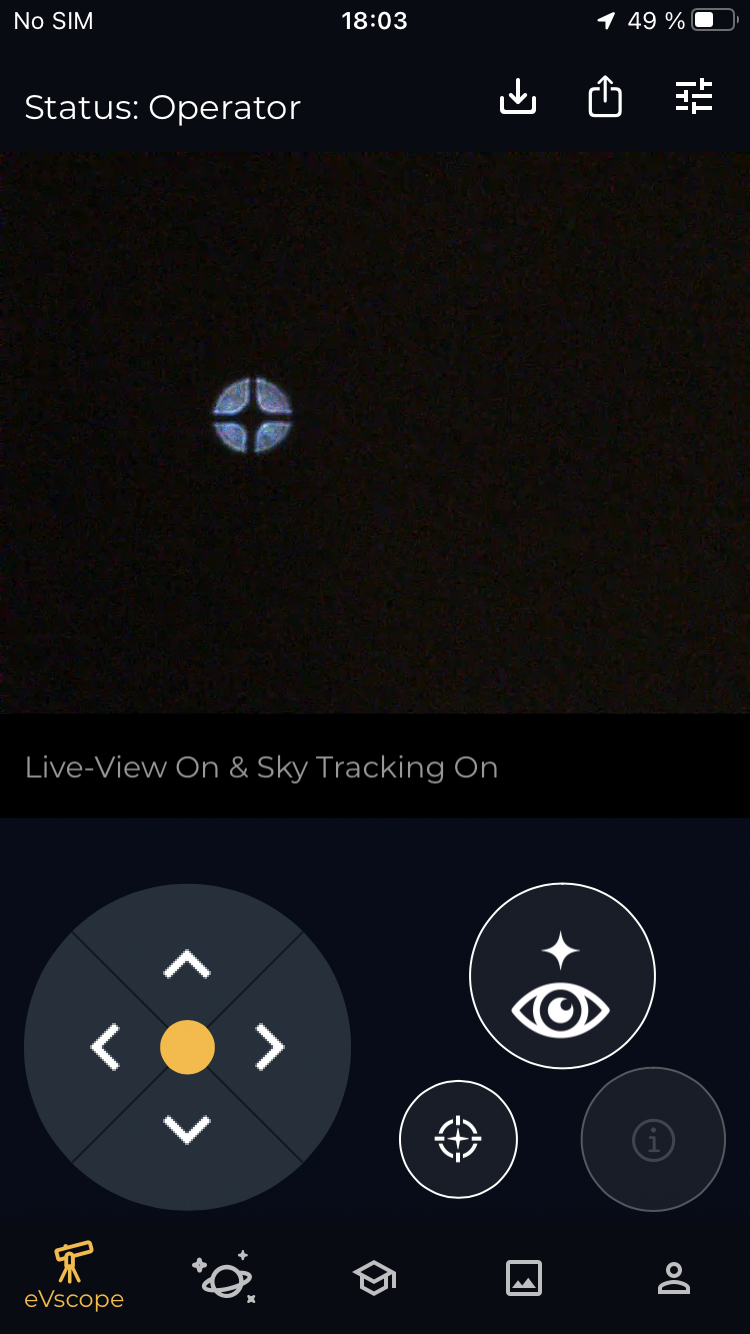 |
Right end reached... |
From Right to Left End
 |
<< Right end previous run Right end new run>> |
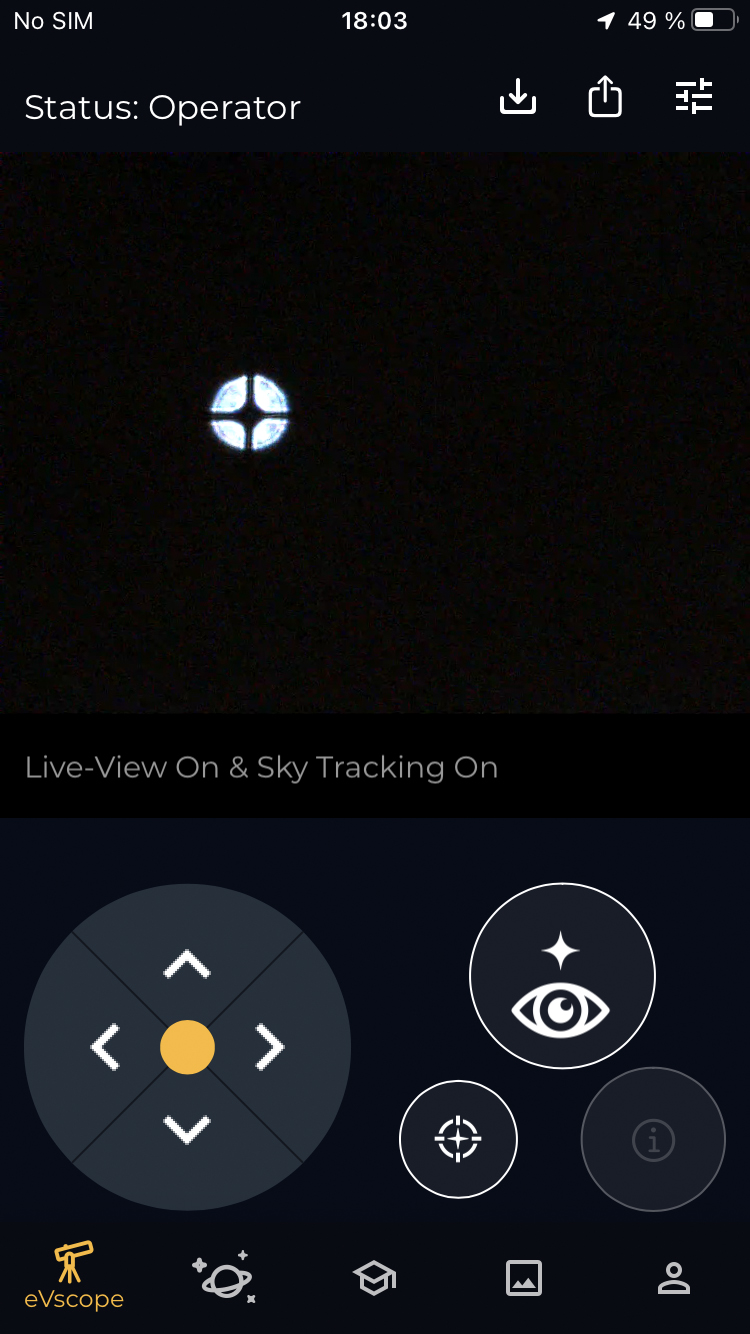 |
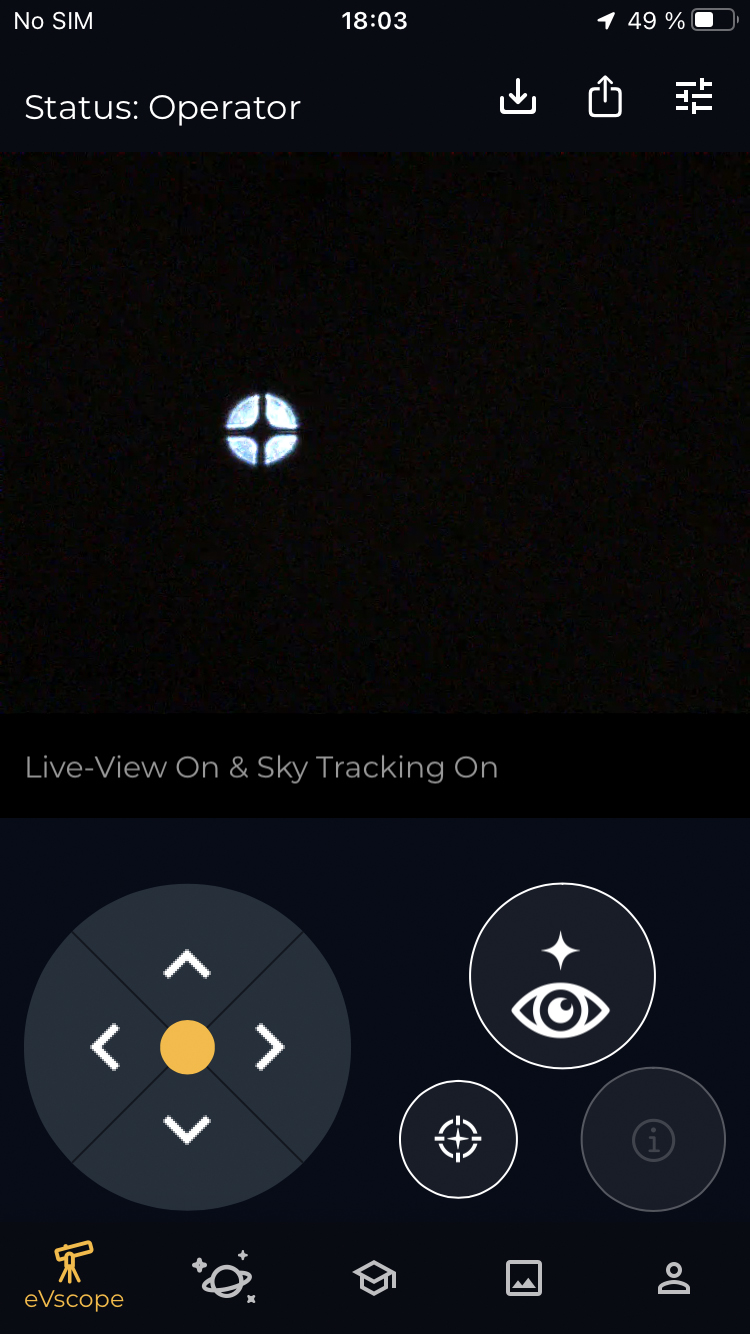 |
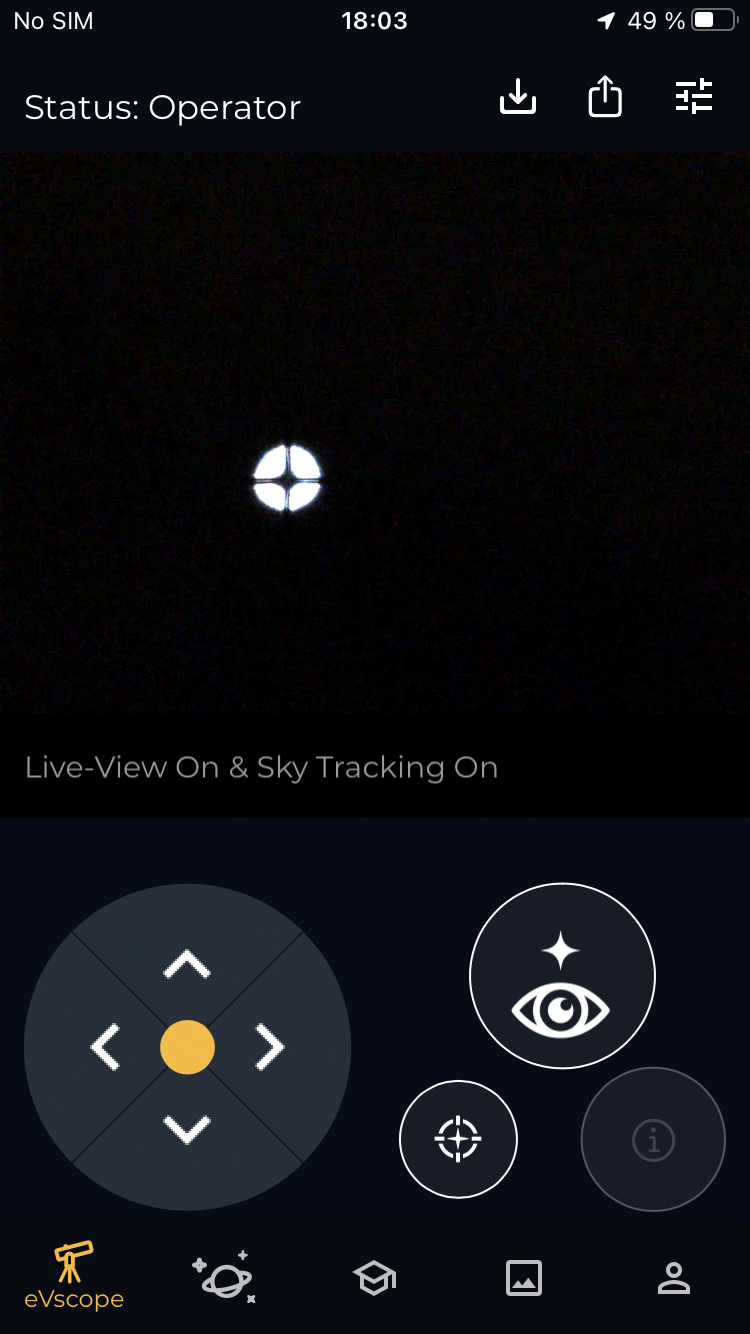 |
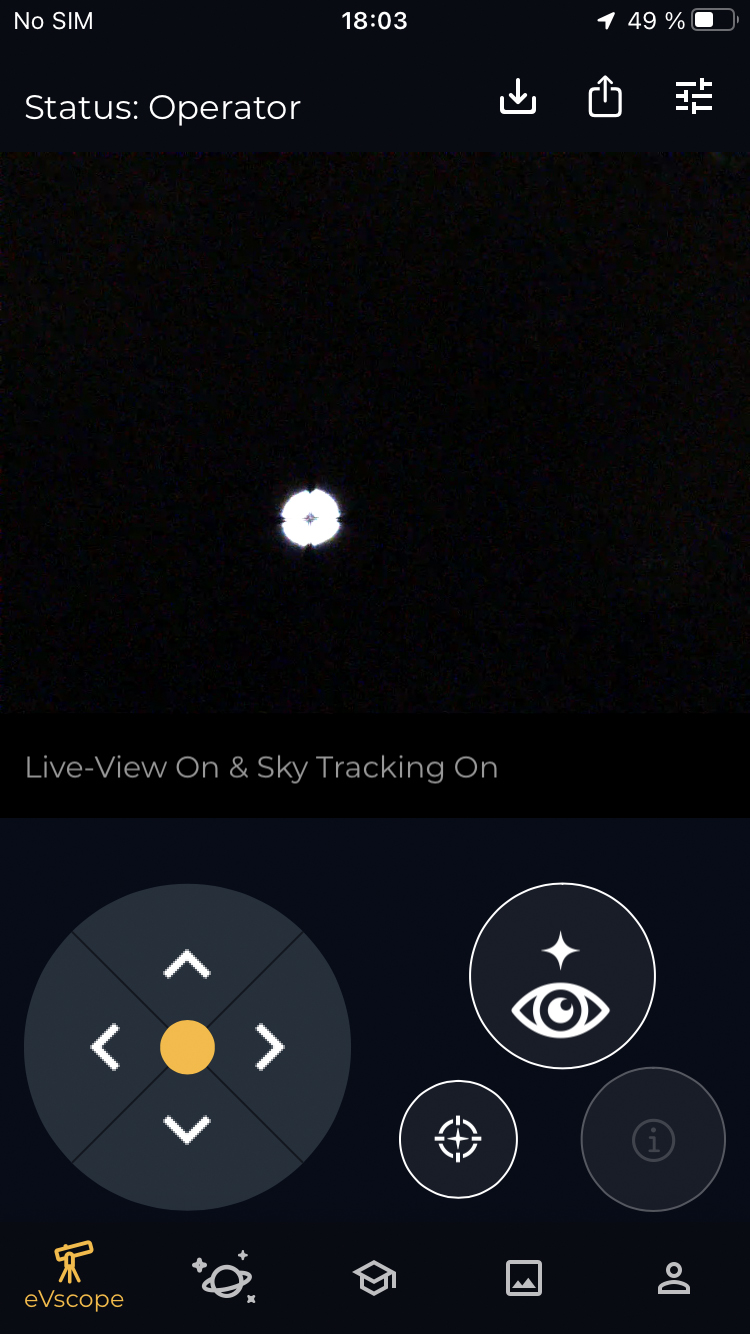 |
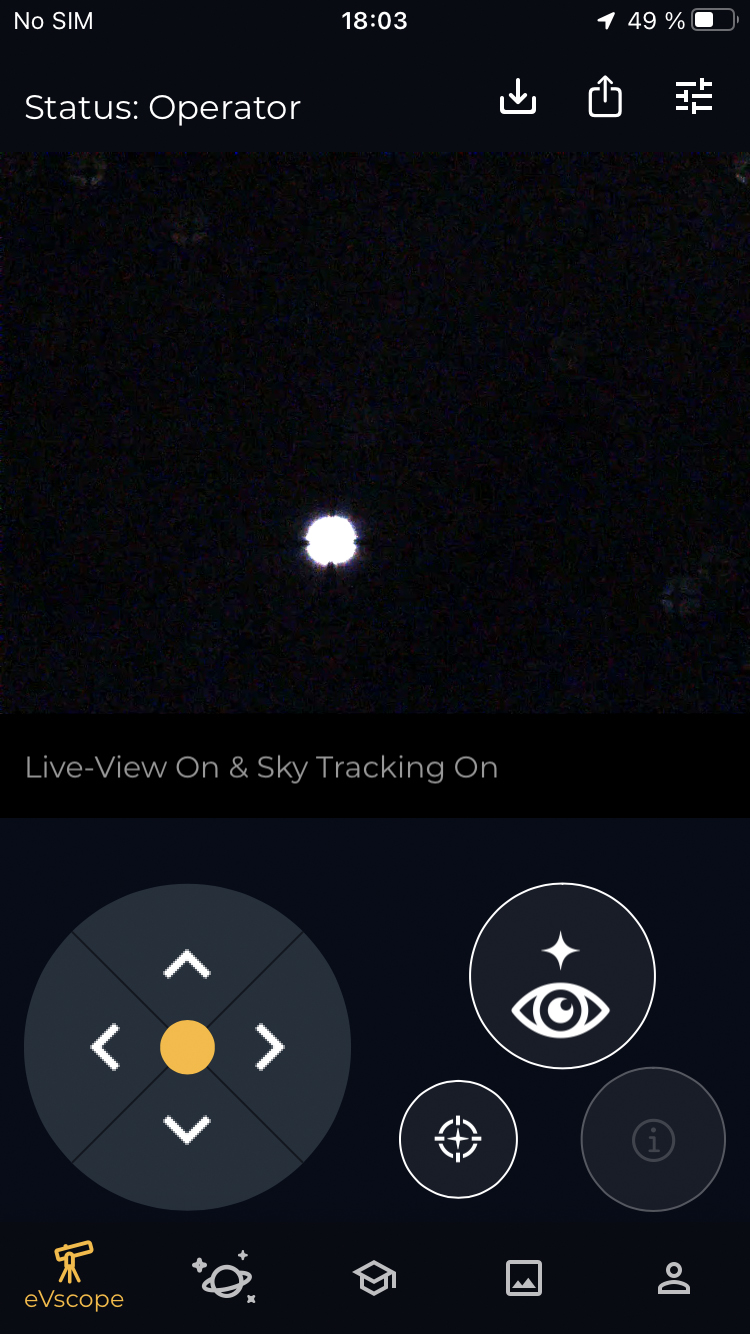 |
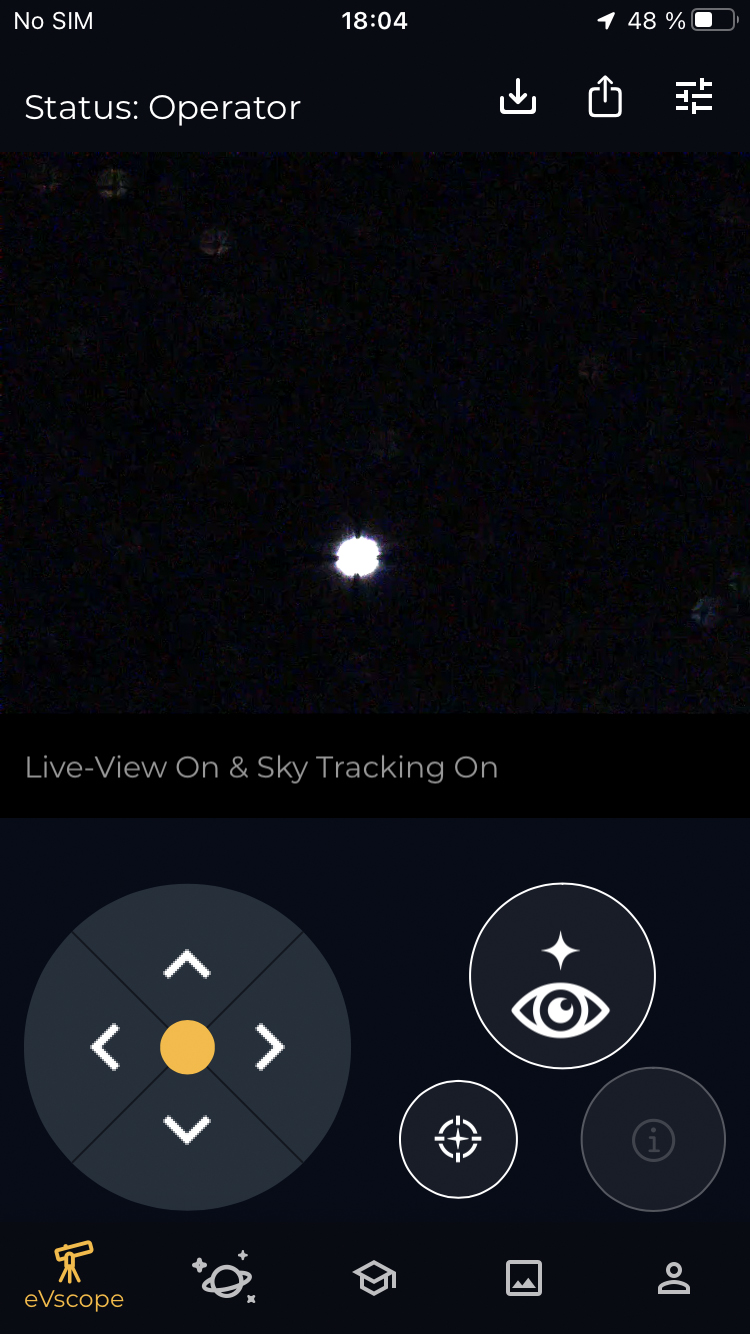 |
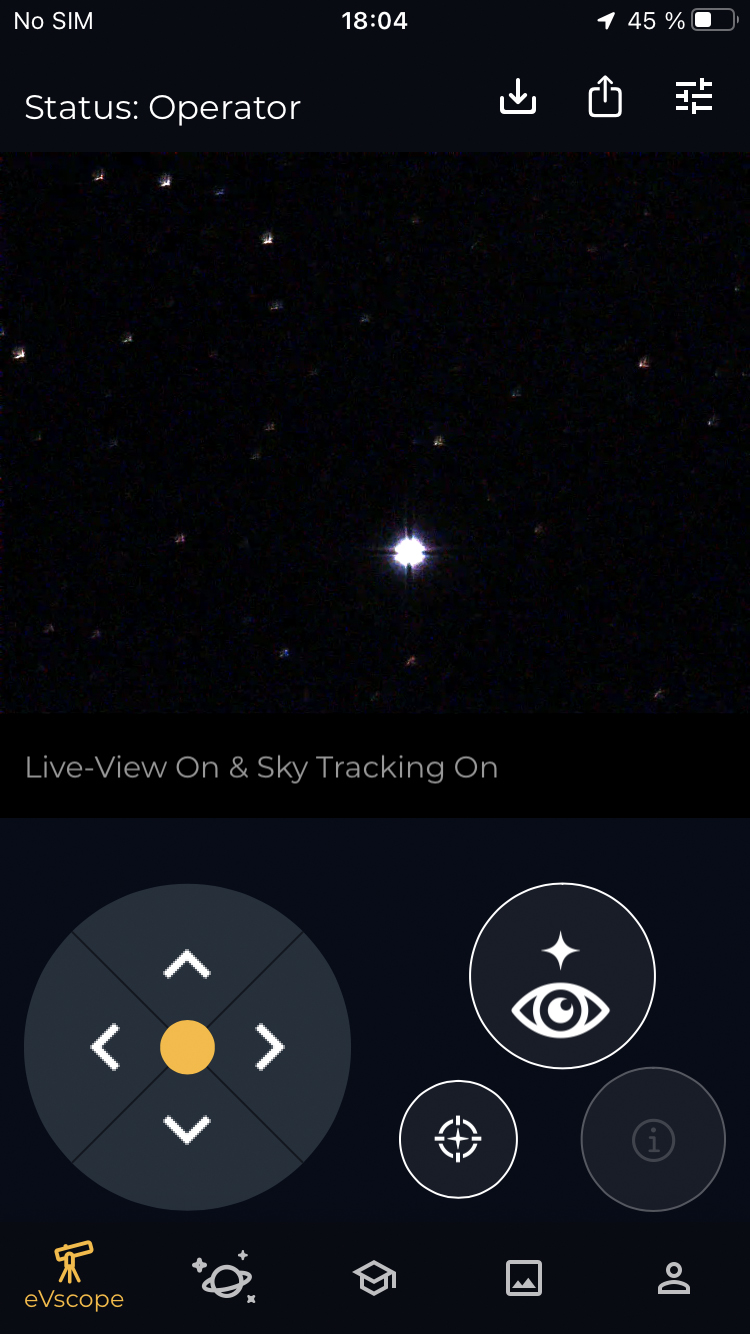 |
 |
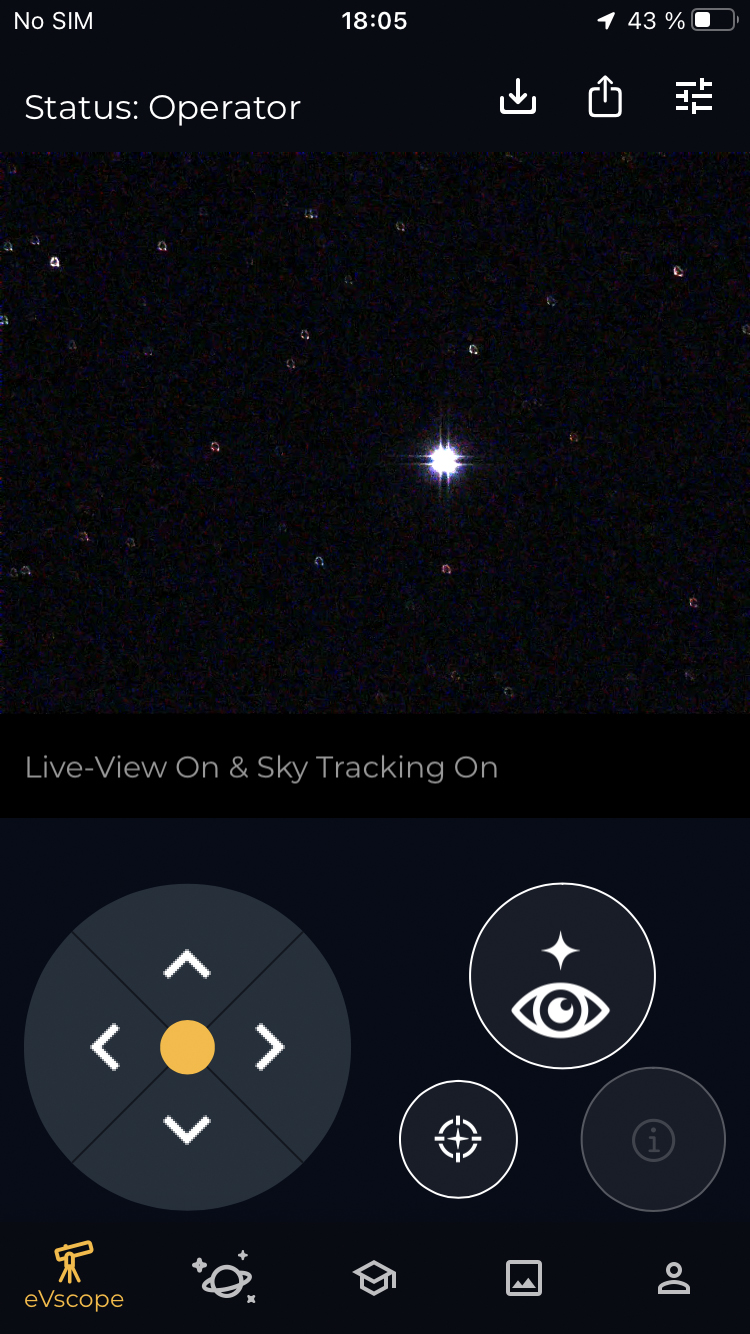 |
 |
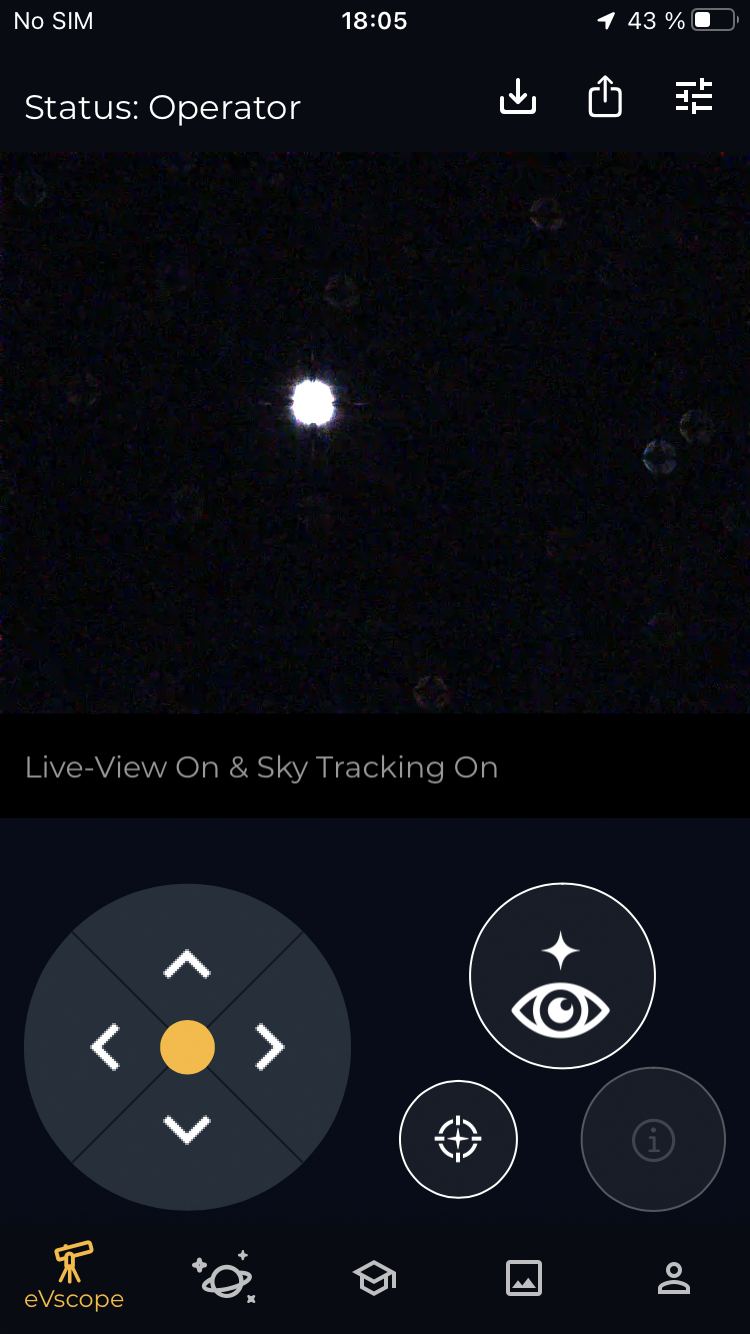 |
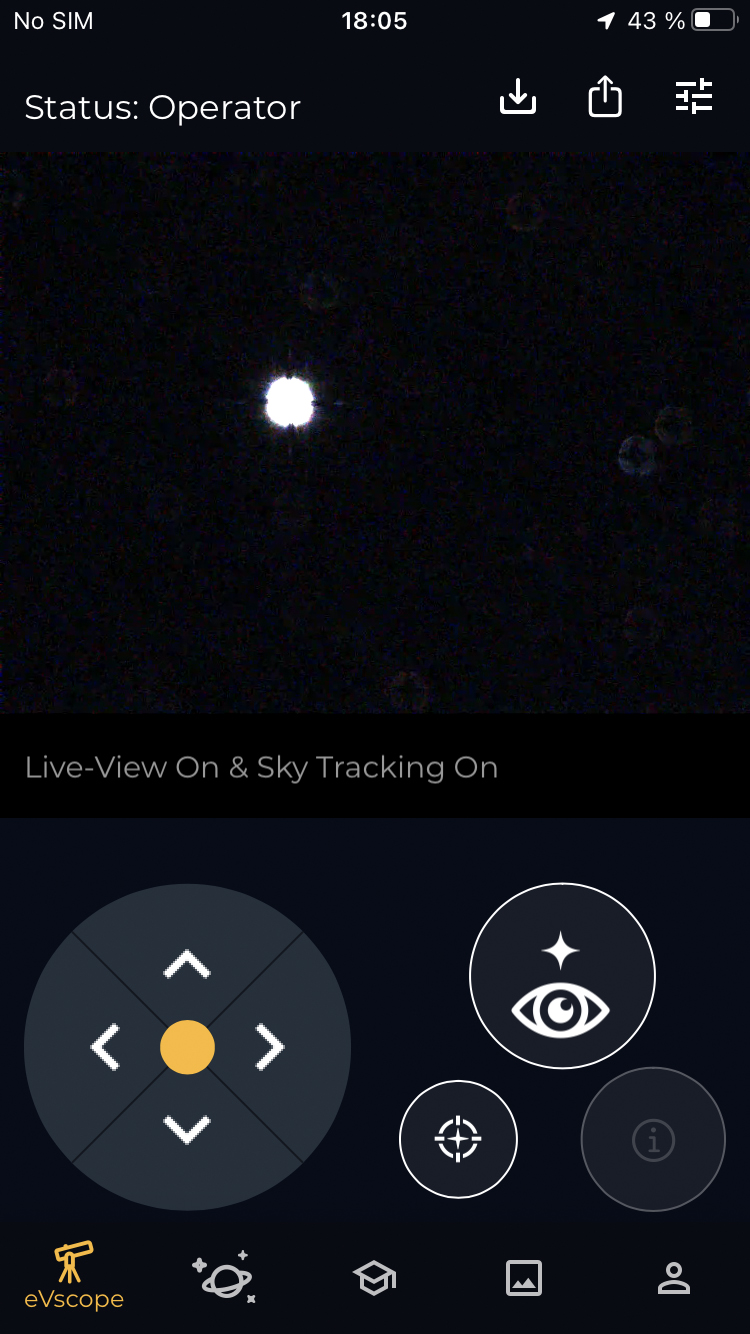 |
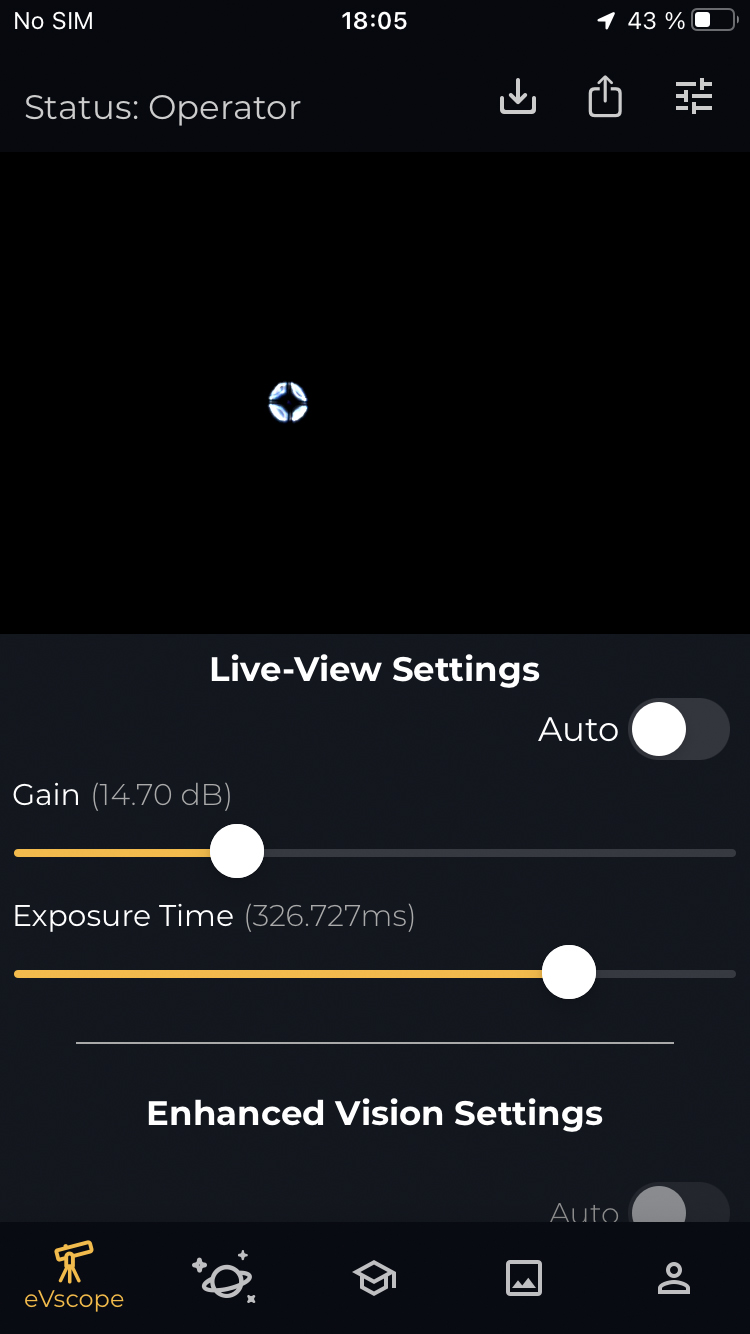 |
Left end reached... |
From Left to Right End
 |
<< Left end previous run Left end new run>> |
 |
 |
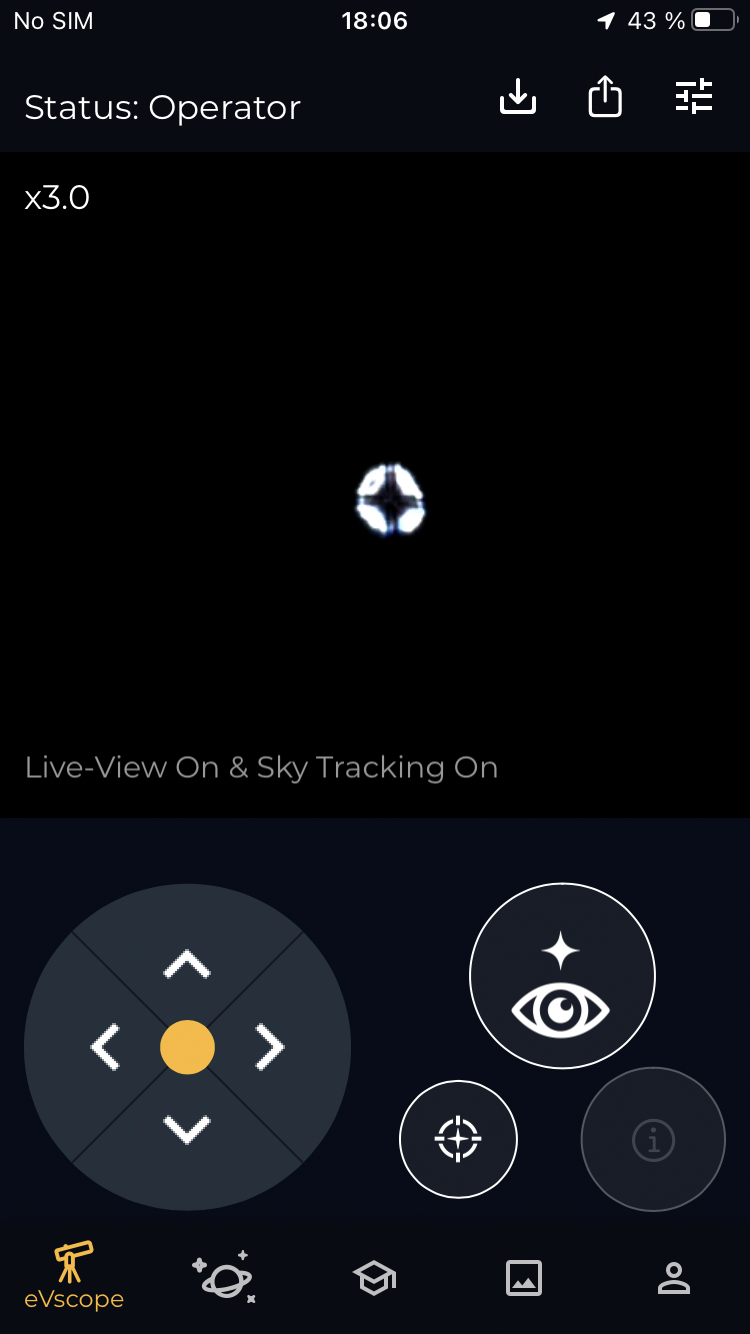 |
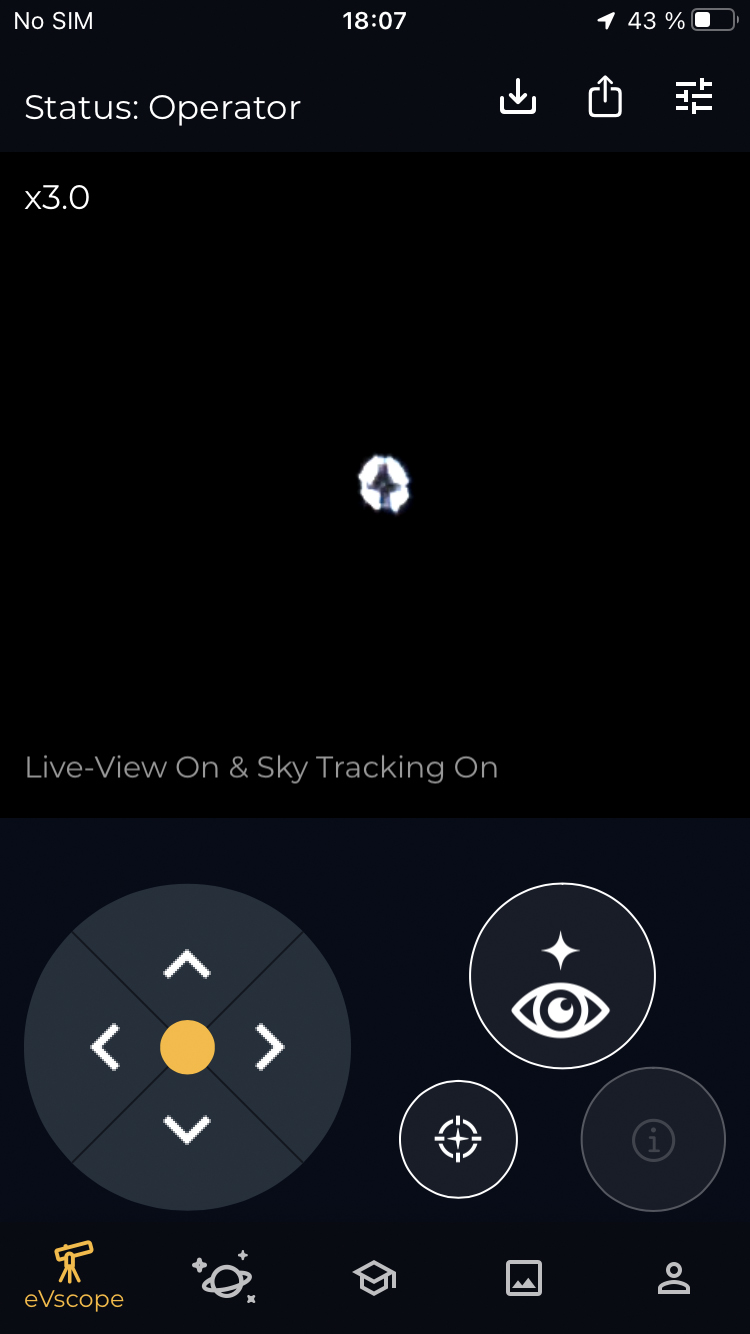 |
 |
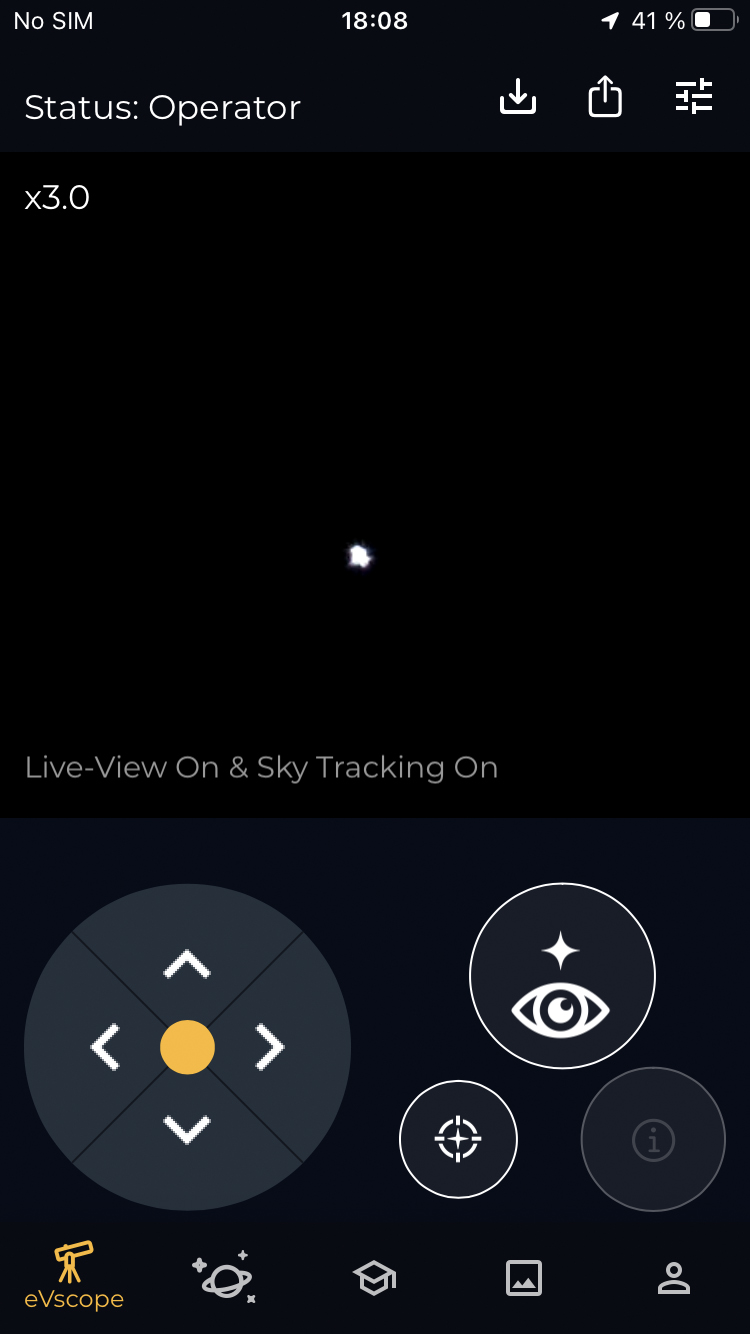 |
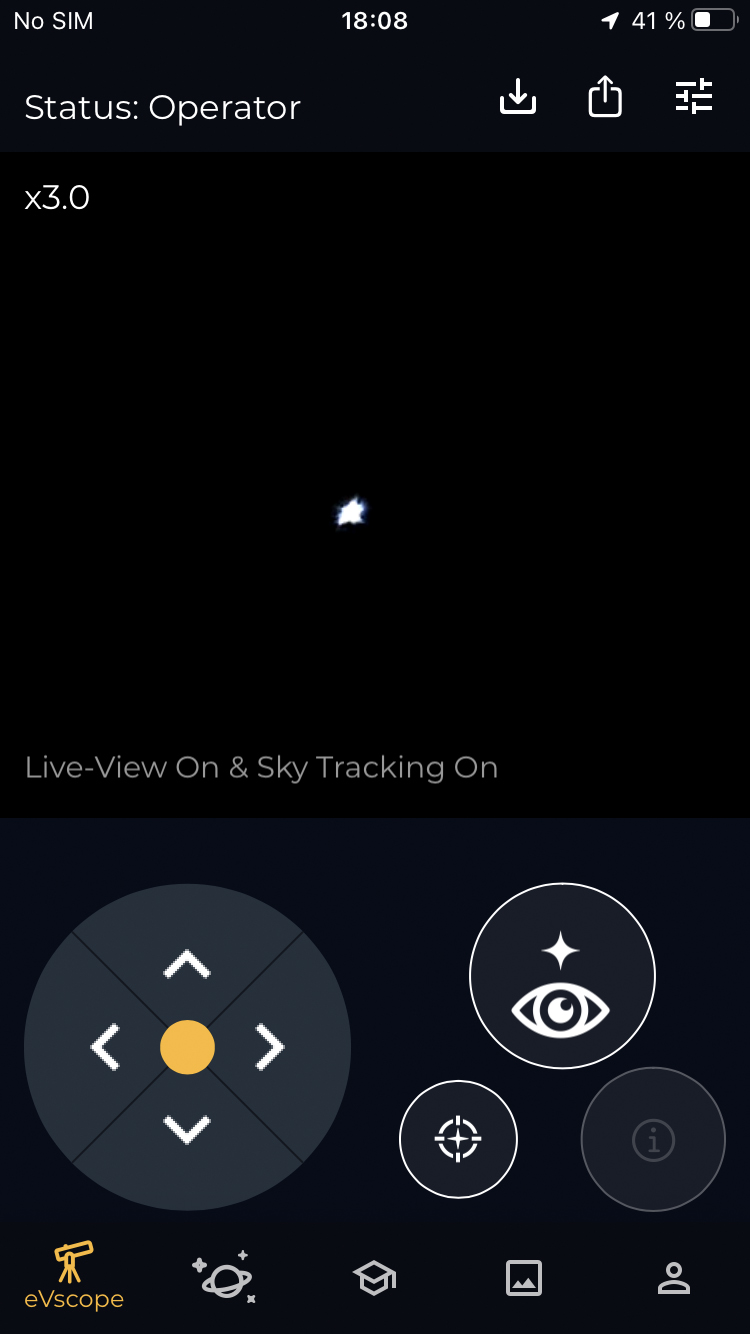 |
 |
 |
 |
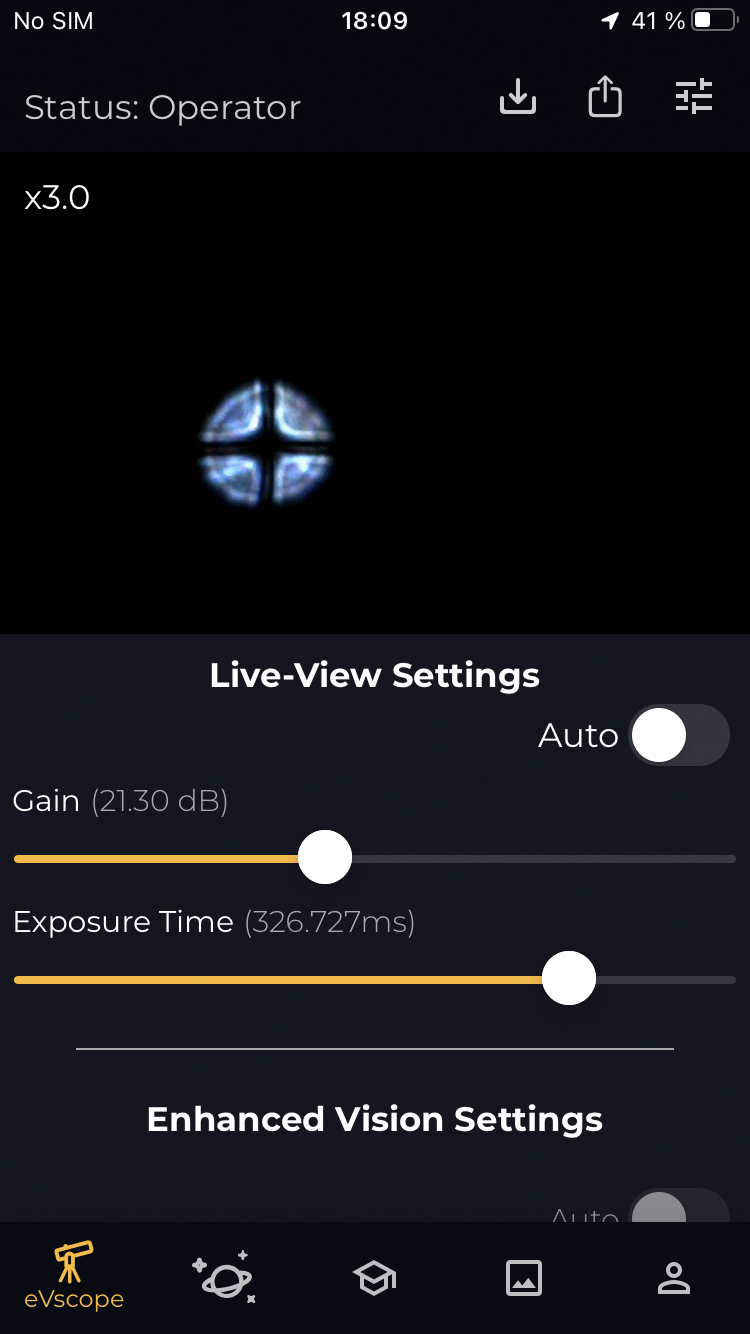 |
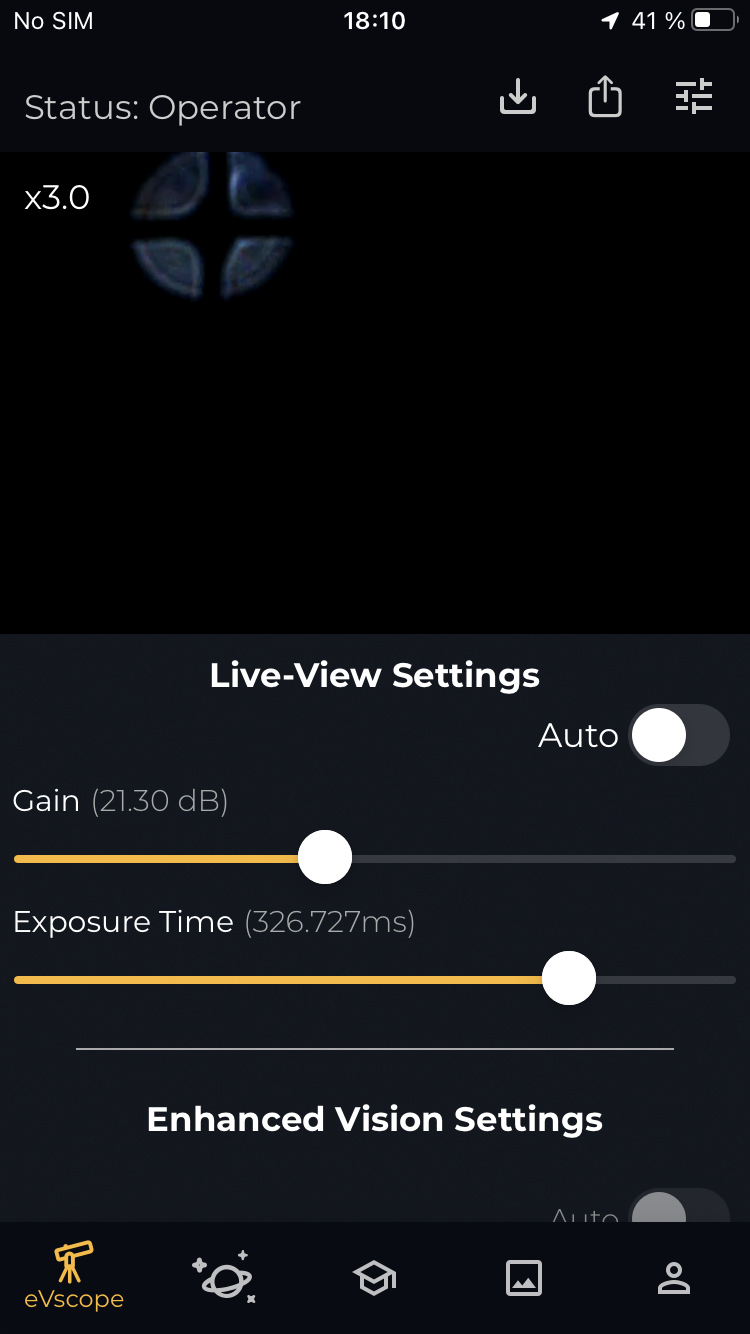 |
Probably, clouds made the pattern fainter... |  |
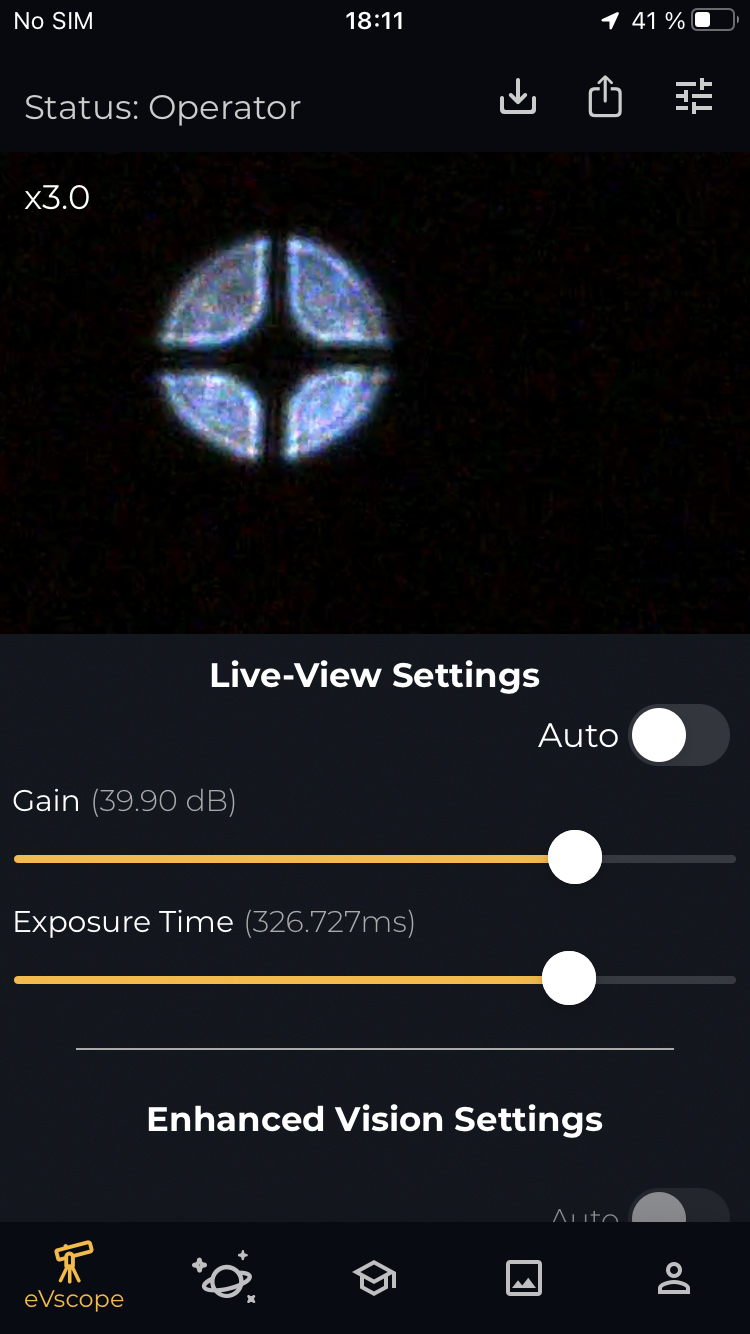 |
 |
Right end reached... |
Overview of the Collimation Patterns at the End Positions of the Focus Wheel
 |
 |
|
 |
 |
 |
Top row: Collimation pattern at the left end (-90°); bottom row: collimation patterns at the right end (270°).
Note: In a Unistellar video about collimation, it is stated that you can move the focus wheel in either direction for collimation, but clock-wise only 90° instead of the possible 270°. Im my case, I would probably not arrive at a useable collimation pattern at 90°...
Some Observed DSO...
The following eVscope 2 photos were taken after I had taken the collimation photos and are unprocessed. Upcoming clouds prevented me from accessing more targets...
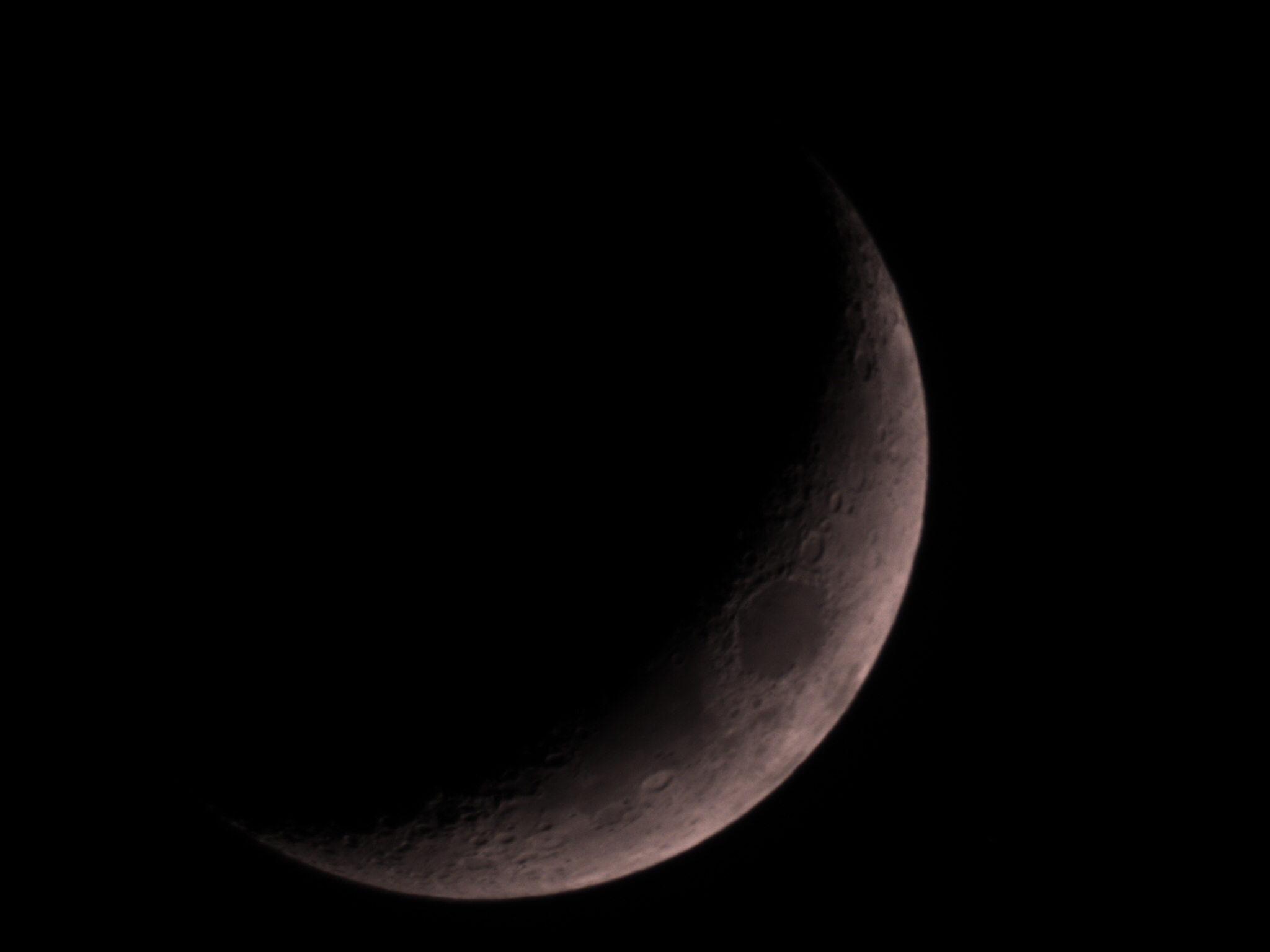 |
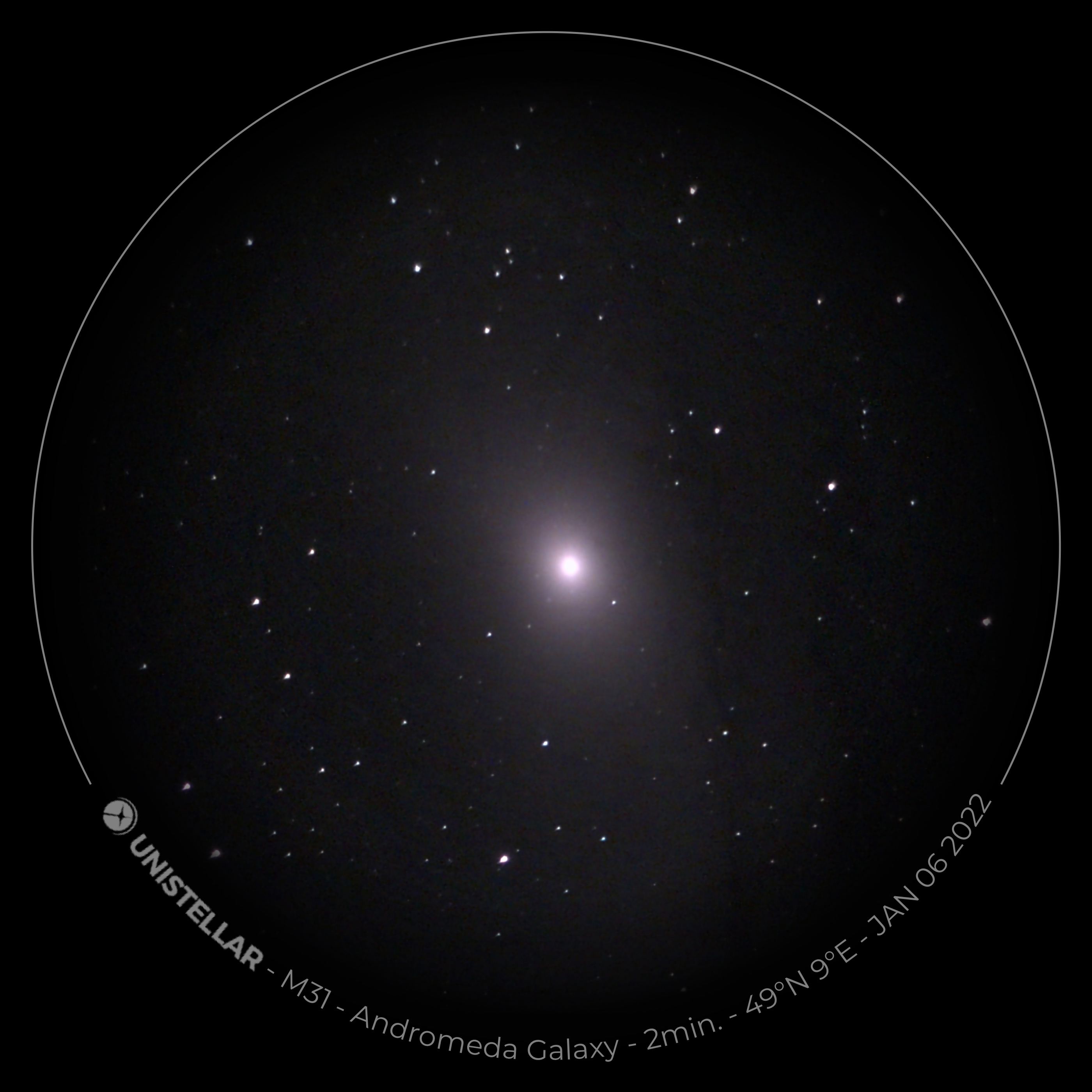 |
|
Cescent of the Moon |
M 31 (Andromeda Galaxy) |
|
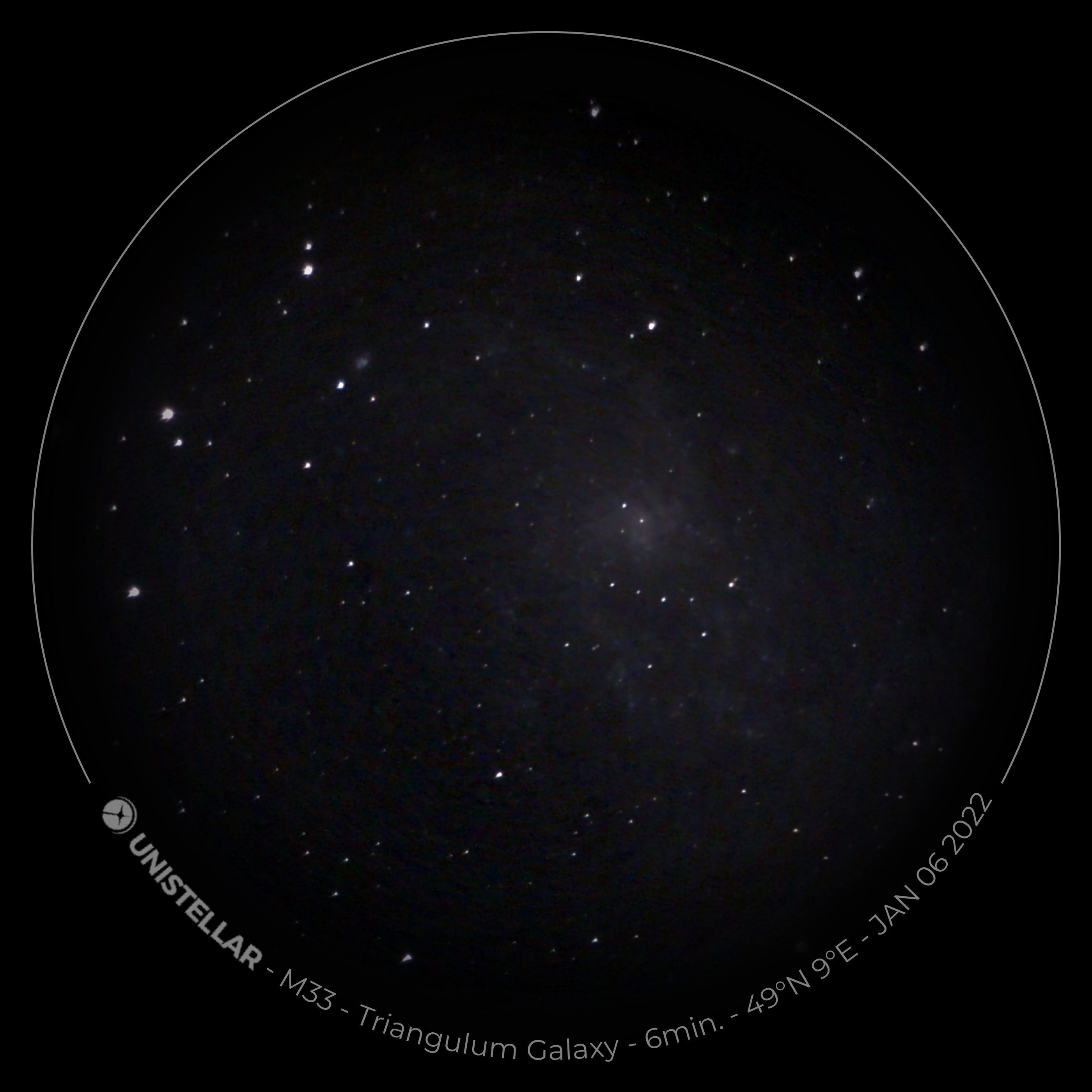 |
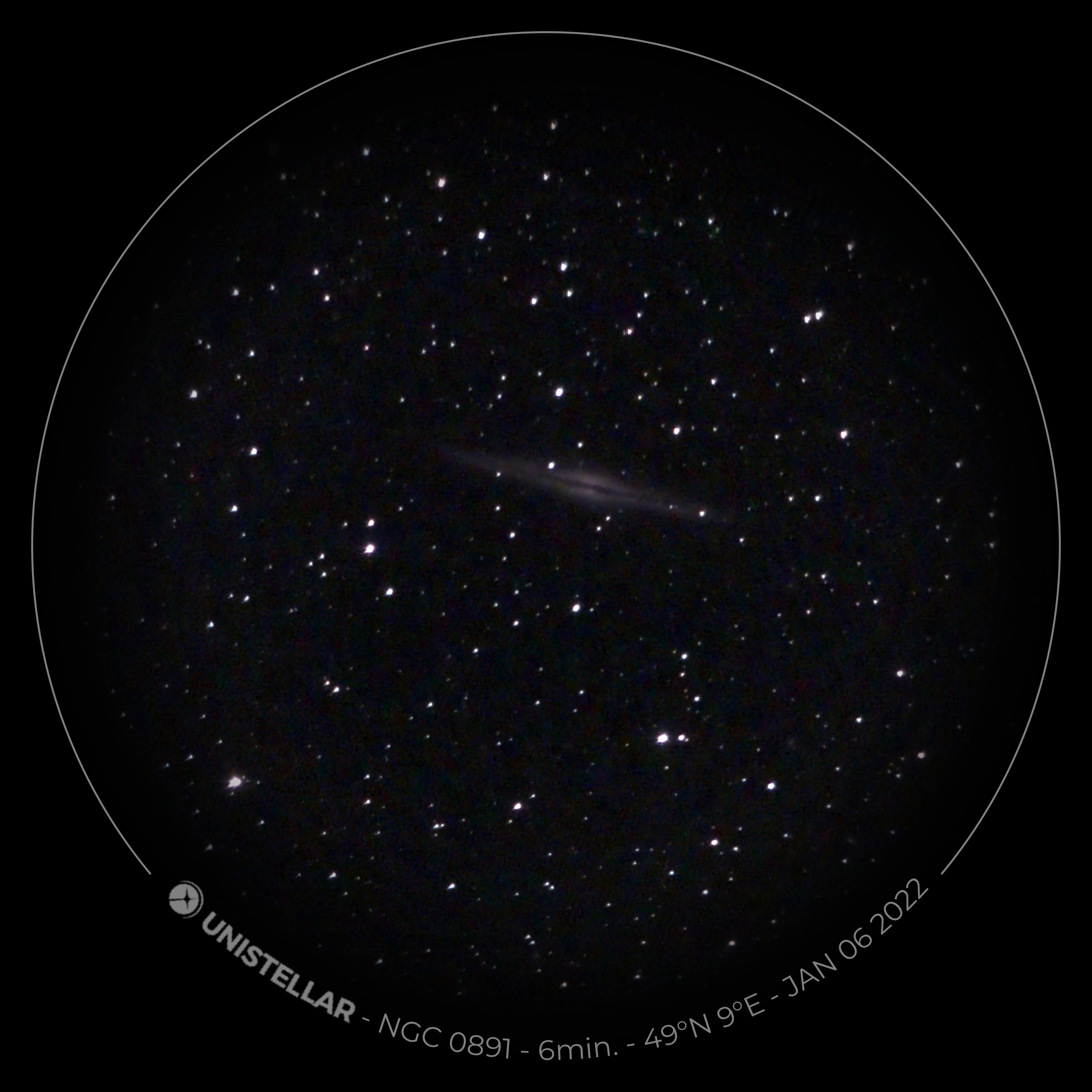 |
|
M 33 (Triangulum Galaxy), 6 min |
NGC 891, 6 min |
|
M 27 (Dumbbell Nebula), upcoming clouds... |
First Conclusions
It is too early for first conclusions at the moment. One obvious result is that the collimation patterns differ considerably depending on, whether you turn the focus wheel to the left end or to the right end.
In mid-January 2022, I received a reply from the support of Unistellar, telling
that my focus is very nice, but that the collimation pattern is asymmetric.
I will pursue this further now, although I find it difficult to find asymmetries
in the pattern, particularly since the pattern itself is slightly distortet*.
Furthermore, I discovered later that the asymmetries may change, depending
on the position of the pattern on the screen...
*) Maybe, this is already an indicator for the tension on the mirror that was detected at Unistellar (see "update")...
Update: Since I was not satisfied with the results of my new eVscope 2, Unistellar offered to check and possibly repair my eVscope 2. So, I sent it to Unistellar on February 14, 2022 and received information on February 18 that my eVscope 2 had been repaired and will be returned to me. When asked, I was told that there was a problem with the primary mirror, which was slightly under tension and therefore produced blurry images. As proof of the repair, I received a photo of Alnilam, which was taken with my eVscope 2 after the repair. It looks much better than my similar photo of Alnitak (near the Flame Nebula), but at closer look still exhibits triangular stars):
In March 2022, I was able to take first photos with my repaired eVscope 2. Read pages First Experiences (After Repair - Part 1) and First Experiences (After Repair - Part 2) for more information! According to this, the repair resulted in an improvement, but did not completely eliminate the mirror tension. Unistellar therefore offered me to return my eVscope 2 (end of March 2022) and exchange it for a new one. This arrived on April 8, 2022. So I close the pages for my first eVscope 2 sample!
So please note that my eVscope 2 photos on this page do not reflect the true performance of the eVscope 2!
Links
- Unistellar Website: unistellaroptics.com
- eVscope 2 product page: unistellaroptics.com/evscope2
- See also my page offering Astronomy Links.
| 20.09.2022 |
